AI winter
description: periods of reduced funding and interest in AI research
82 results

Machines of Loving Grace: The Quest for Common Ground Between Humans and Robots
by
John Markoff
Published 24 Aug 2015
A member of a small group of AI researchers, he engaged in a series of weekly seminars with Berkeley philosophers Hubert Dreyfus and John Searle. The philosophers convinced him that there were real limits to the capabilities of intelligent machines. Winograd’s conversion coincided with the collapse of a nascent artificial intelligence industry known as the “AI Winter.” Several decades later, Winograd, who was faculty advisor for Google cofounder Larry Page at Stanford, famously counseled the young graduate student to focus on the problem of Web search rather than self-driving cars. In the intervening decades Winograd had become acutely aware of the importance of the designer’s point of view.
…
When the commercial market for artificial intelligence software failed to materialize quickly enough, inside the company he struggled, most bitterly with board member Pierre Lamond, a venture capitalist who was a veteran of the semiconductor industry with no software experience. Ultimately Breiner lost his battle and Lamond brought in an outside corporate manager who moved the company headquarters to Texas, where the manager lived. Syntelligence itself would confront directly what would be become known as the “AI Winter.” One by one the artificial intelligence firms of the early 1980s were eclipsed either because they failed financially or because they returned to their roots as experimental efforts or consulting companies. The market failure became an enduring narrative that came to define artificial intelligence, with a repeated cycle of hype and failure fueled by overly ambitious scientific claims that are inevitably followed by performance and market disappointments.
…
A generation of true believers, steeped in the technocratic and optimistic artificial intelligence literature of the 1960s, clearly played an early part in the collapse. Since then the same boom-and-bust cycle has continued for decades, even as AI has advanced.38 Today the cycle is likely to repeat itself again as a new wave of artificial intelligence technologies is being heralded by some as being on the cusp of offering “thinking machines.” The first AI Winter had actually come a decade earlier in Europe. Sir Michael James Lighthill, a British applied mathematician, led a study in 1973 that excoriated the field for not delivering on the promises and predictions, such as the early SAIL prediction of a working artificial intelligence in a decade. Although it had little impact in the United States, the Lighthill report, “Artificial Intelligence: A General Survey,” led to the curtailment of funding in England and a dispersal of British researchers from the field.

Rule of the Robots: How Artificial Intelligence Will Transform Everything
by
Martin Ford
Published 13 Sep 2021
“General game playing with schema networks,” Vicarious Research, August 7, 2017, www.vicarious.com/2017/08/07/general-game-playing-with-schema-networks/. 14. Sam Shead, “Researchers: Are we on the cusp of an ‘AI winter’?,” BBC News, January 12, 2020, www.bbc.com/news/technology-51064369. 15. Filip Piekniewski, “AI winter is well on its way,” Piekniewski’s Blog, May 28, 2018, blog.piekniewski.info/2018/05/28/ai-winter-is-well-on-its-way/. 16. Ford, Interview with Jeffery Dean, in Architects of Intelligence, p. 377. 17. Ford, Interview with Demis Hassabis, in Architects of Intelligence, p. 171. 18. Andrea Banino, Caswell Barry, Dharshan Kumaran and Benigno Uria, “Navigating with grid-like representations in artificial agents,” DeepMind Research Blog, May 9, 2018, deepmind.com/blog/article/grid-cells. 19.
…
Throughout its history, the field of artificial intelligence has suffered from a kind of collective bipolar disorder, with periods of high exuberance and rapid progress punctuated by sometimes decades-long stretches of disillusionment and low investment that have come to be called “AI winters.” The field’s periodic plunge into AI winters likely resulted in part from a lack of appreciation of just how difficult the problems that AI aims to solve really are. Another critical factor, however, was a simple failure to recognize how genuinely slow computers were prior to the 1990s. It would take decades of progress under the relentless regime of Moore’s Law to deliver hardware that would begin to put the dreams of the 1956 Dartmouth conference participants within reach.
…
Even with a driver in place to oversee the car’s operation, a number of fatal accidents had tarnished the industry’s reputation. In a widely shared 2018 blog post entitled “AI Winter Is Well on Its Way,” machine learning researcher Filip Piekniewski pointed out that records required by the State of California showed that one car being tested “literally could not drive ten miles” without a system disengagement that required the human driver to take control.15 My own view is that if another AI winter indeed looms, it’s likely to be a mild one. Though the concerns about slowing progress are well founded, it remains true that over the past few years AI has been deeply integrated into the infrastructure and business models of the largest technology companies.
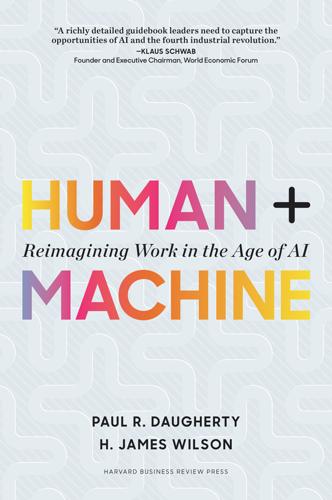
Human + Machine: Reimagining Work in the Age of AI
by
Paul R. Daugherty
and
H. James Wilson
Published 15 Jan 2018
Robotiq, “Inertia Switch Case Study – Robotiq 2-Finger Adaptive Gripper – ROBOTIQ,” YouTube video, 1:32 minutes, posted July 28, 2014, https://www.youtube.com/watch?v=iJftrfiGyfs. Kindler, Gentler Robots During the second AI “winter,” Rodney Brooks challenged one of the fundamental ideas that had driven previous AI research—namely, the reliance on predetermined symbols and relationships between symbols to help computers make sense of the world (see the sidebar “Two AI Winters”). He claimed a much more robust approach: instead of cataloging the world in advance and representing it with symbols, why not survey it with sensors instead? “The world is its own best model,” he wrote in a famous 1990 paper called “Elephants Don’t Play Chess.”
…
By the 1970s, funding had dissipated so much that the era became known as the first AI winter. Then, during a few years in the 1980s, some researchers made progress in so-called expert systems—computer systems loaded with code that allowed a machine to perform a kind of rudimentary reasoning using “if-then” rules rather than following a strict, predetermined algorithm. But the desktop computer revolution was under way, and attention was diverted toward personal computers as they became increasingly affordable and practical for the average person. Again, money for AI dried up, and the second AI winter descended. It wasn’t until the 2000s that AI began to draw major investment again.
…
Say a worker is putting together a car and needs to put an interior panel on one of its doors. The robot can lift the panel and position it into place, while the worker performs fine adjustments and fastening without fear that a clunky machine will clock him in the head. AI helps both robots and people play to their strengths, and in the process, the assembly line changes shape. Two AI Winters The path to human-machine collaboration—a hallmark of the third wave of process improvement—was far from smooth. AI was initially greeted with considerable enthusiasm, only to be followed by results that didn’t live up to the initial hype, and then more progress, leading to a second wave of hype then disappointment.

Architects of Intelligence
by
Martin Ford
Published 16 Nov 2018
There have even been suggestions that a new AI Winter could be on the horizon. Do you think that’s a real risk? Could disillusionment lead to a big drop off in investment? ANDREW NG: No, I don’t think there’ll be another AI winter, but I do think there needs to be a reset of expectations about AGI. In the earlier AI winters, there was a lot of hype about technologies that ultimately did not really deliver. The technologies that were hyped were really not that useful, and the amount of value created by those earlier generations of technology was vastly less than expected. I think that’s what caused the AI winters. In the current era, if you look at the number of people actually working on deep learning projects to date, it’s much greater than six months ago, and six months ago, it was much greater than six months before that.
…
MARTIN FORD: Do you think there will be a backlash against all the hype surrounding deep learning when its limitations are more widely recognized? BARBARA GROSZ: I have survived numerous AI Winters in the past and I’ve come away from them feeling both fearful and hopeful. I’m fearful that people, once they see the limitations of deep learning will say, “Oh, it doesn’t really work.” But I’m hopeful that, because deep learning is so powerful for so many things, and in so many areas, that there won’t be an AI Winter around deep learning. I do think, however, that to avoid an AI Winter for deep learning, people in the field need to put deep learning in its correct place, and be clear about its limitations.
…
I also hope we’re going to make some convincing breakthrough before the people funding all this research get tired, because that’s what happened in previous decades. MARTIN FORD: You’ve warned that AI is being overhyped and that this might even lead to another “AI Winter.” Do you really think there’s a risk of that? Deep learning has become so central to the business models of Google, Facebook, Amazon, Tencent, and all these other incredibly wealthy corporations. So, it seems hard to imagine that investment in the technology would fall off dramatically. YANN LECUN: I don’t think we’re going to see an AI winter in the way we saw before because there is a big industry around it and there are real applications that are bringing real revenue to these companies.
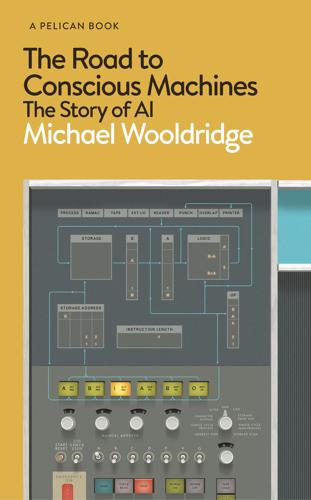
The Road to Conscious Machines
by
Michael Wooldridge
Published 2 Nov 2018
Over in the USA, the main funders of AI research historically had been the military funding agency the Defense Advanced Research Projects Agency (DARPA) and its predecessor, the Advanced Research Projects Agency (ARPA), but by the early 1970s they too were becoming frustrated with the failure of AI to deliver on its many promises. Funding cuts to AI research in the USA followed. The decade from the early 1970s to the early 1980s later became known as the AI winter, although it should perhaps better be known as the first AI winter, because there were more to come. The stereotype was established, that of AI researchers making hopelessly overoptimistic and unwarranted predictions, only to fail to deliver. Within the scientific community, AI began to acquire a reputation somewhat akin to homeopathic medicine.
…
As a serious academic discipline, it appeared to be in terminal decline. Chapter 3 Knowledge Is Power It is important not to underestimate the damage inflicted on AI during the mid-1970s. Many academics started to treat AI as a pseudo-science – the field has really only recently recovered from the reputational damage it suffered during the AI winter. But even as the Lighthill Report was being circulated and its consequences were being felt, a new approach to AI was beginning to gain attention, which promised to overcome the problems that had led to AI getting such a bad press. The problem with previous efforts, according to a new generation of researchers that burst onto the scene in the late 1970s and early 1980s, was that AI had focused too much on general approaches like search and problem solving.
…
Typically, these were problems in which a human expert had acquired expertise over a long period of time, and where that human expertise was scarce. For the next decade, knowledge-based expert systems were the main focus of AI research. Enormous investment from industry flowed into the field. By the early 1980s, the AI winter was over – another, much bigger AI boom was underway. In this chapter, we’ll look at the expert systems boom, which lasted from the late 1970s to the late 1980s. We’ll start by seeing how human expert knowledge can be captured and given to computers, and I’ll tell you the story of MYCIN – one of the most celebrated expert systems of the period.
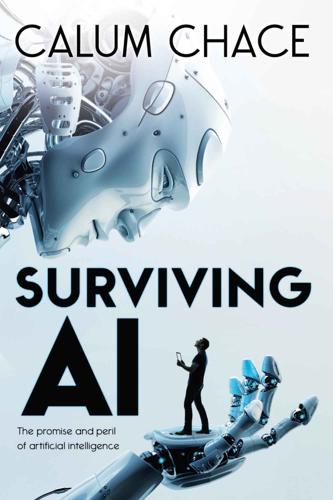
Surviving AI: The Promise and Peril of Artificial Intelligence
by
Calum Chace
Published 28 Jul 2015
Herbert Simon said in 1965 that “machines will be capable, within twenty years, of doing any work a man can do,” (5) and Marvin Minksy said two years later that “Within a generation . . . the problem of creating ‘artificial intelligence’ will substantially be solved.” (6) These were hugely over-optimistic claims which with hindsight look like hubris. But hindsight is a wonderful thing, and it is unfair to criticise harshly the pioneers of AI for under-estimating the difficulty of replicating the feats which the human brain is capable of. AI winters and springs When it became apparent that AI was going to take much longer to achieve its goals than originally expected, the funding taps were turned off. There were rumblings of discontent among funding bodies from the late 1960s, and they crystallised in a report written in 1973 by mathematician James Lighthill for the British Science Research Council.
…
A particular problem identified in the Lighthill report is the “combinatorial problem”, whereby a simple problem involving two or three variables becomes vast and possibly intractable when the number of variables is increased. Thus simple AI applications which looked impressive in laboratory settings became useless when applied to real-world situations. From 1974 until around 1980 it was very hard for AI researchers to obtain funding, and this period of relative inactivity which became known as the first AI winter. This bust was followed in the 1980s by another boom, thanks to the advent of expert systems, and the Japanese Fifth Generation Computer Systems project. Expert systems limit themselves to solving narrowly-defined problems from single domains of expertise (for instance, litigation) using vast data banks.
…
The boom and bust phenomenon was familiar to economists, with famous examples being Tulipmania in 1637 and the South Sea Bubble in 1720. It has also been a feature of technology introduction since the industrial revolution, seen in canals, railways and telecoms, as well as in the dot-com bubble of the late 1990s. The second AI winter thawed in the early 1990s, and AI research has been increasingly well funded since then. Some people are worried that the present excitement (and concern) about the progress in AI is merely the latest boom phase, characterised by hype and alarmism, and will shortly be followed by another damaging bust, in which thousands of AI researchers will find themselves out of a job, promising projects will be halted, and important knowledge and insights lost.
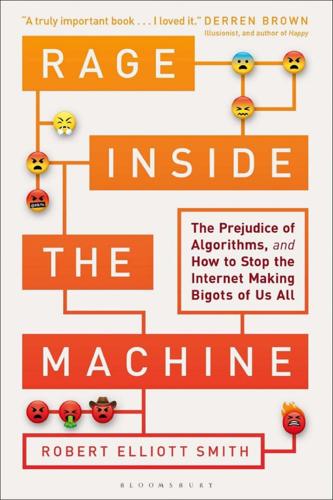
Rage Inside the Machine: The Prejudice of Algorithms, and How to Stop the Internet Making Bigots of Us All
by
Robert Elliott Smith
Published 26 Jun 2019
If you could get the time to sit down with real experts, it was the most expensive time possible, and gathering sufficient knowledge (data) from them was explosively difficult. This made the implementation of the physical symbol system hypothesis, and reasoning as search, commercially unviable, leading to complete failure of the AI enterprise in the 1970s and the dawn of what is now known as the ‘AI winter’. Seeking to evaluate what the UK was getting for its investment in AI research in 1973, Sir James Lighthill reported to Parliament that there had been an utter failure of the field to advance on its ‘grandiose objectives’. Soon afterwards in the USA, ARPA (Advanced Research Projects Agency), the agency now known as DARPA (Defence Advanced Research Projects Agency), received a similar report from the American Study Group.
…
Soon afterwards in the USA, ARPA (Advanced Research Projects Agency), the agency now known as DARPA (Defence Advanced Research Projects Agency), received a similar report from the American Study Group. As a result, public funding for AI research was dramatically cut, and, by the end of the 1980s, almost all of those early AI start-ups had collapsed. It would be wrong to say that expert systems died completely in the AI winter. In reality the term ‘expert system’ was simply replaced with the moniker ‘decision support system’ in reports and research proposals. This was a (perhaps conscious) effort to shift the role of the machine into the position of an aid or support to the less-brittle human decision makers. This re-branding also reduced the overhyped ‘grandiose objectives’ of AI and the techniques used in expert systems were simply absorbed into the expanded repertoire of programmers.
…
Gallup also reports drops in confidence versus historical averages for institutions as varied as banking, criminal justice, medicine, organized labour, big business, police, print media, broadcast media, public schools and organized religion.3 Meanwhile, faith in the opinion of the masses is soaring. What was once derided as ‘lowest common denominator’ is now hailed ‘the wisdom of crowds’. This ‘wisdom’ isn’t only being exploited by populist politicians; it is the life blood of today’s AI. The fact that expertise proved hard to fathom for expert systems is exactly what led to the AI winter. Since then there have been no significant technical breakthroughs on modelling how smart people reason. While modelling the reasoning process of a single human expert proved overwhelmingly expensive, the Internet heralded in a new era whereby the great mass of people in the emergent online world offered up a sea of information for free; and, in many cases, even paid (sometimes explicitly, but largely through subscriptions and views of advertising) to have their data monitored and mined.

Why Machines Learn: The Elegant Math Behind Modern AI
by
Anil Ananthaswamy
Published 15 Jul 2024
Goldstein argued during the National Science Foundation town hall meeting that the commercial value of machine learning will ward off any “ML winter” ahead—a reference to the potential freeze in research funding that has often followed seemingly overhyped technology trying to solve problems too difficult for its times. But what about a more generic AI winter? AI winters, Goldstein said, happened in the late 1960s, when Rosenblatt’s perceptrons were, disingenuously, accused of not being able to solve the XOR problem; and then between 1974 and 1980, after Sir James Lighthill published his scathing report on the utter lack of progress in solving problems in language translation and robotics; and then again in the late 1980s, when research into good old-fashioned AI, or symbolic AI, came to a grinding halt as it became clear that expert systems built using carefully designed rule-based “inference engines” that operated on hand-crafted knowledge bases were…well, useless when it came to sophisticated reasoning involving new know-how not already in the knowledge base.
…
All talk of an electronic computer that would “walk, talk, see, write, reproduce itself and be conscious of its existence” vaporized, as did any notion of sending perceptron devices to other planets as “mechanical space explorers.” Funding agencies balked, money disappeared, and a once-promising field of research ground to an almost dead halt. Those in the field refer to the years from 1974 to 1980 as the first AI winter. Sir James Lighthill, the Lucasian professor of applied mathematics at Cambridge University, surveyed the field and, in 1972, published a report about the state of AI. His report even had a section called “Past Disappointments.” It begins with these words: “Most workers in Al research and in related fields confess to a pronounced feeling of disappointment in what has been achieved in the past twenty-five years.
…
The BBVA Foundation’s citation goes on to say, “Thanks to SVM and kernel methods, intelligent machines can now be trained to classify datasets with human precision, or at times even better, enabling them to recognize everything from voices, handwriting or faces to cancer cells or the fraudulent use of credit cards. SVMs are now being used in genomics, cancer research, neurology, diagnostic imaging, and even in HIV drug cocktail optimization, as well as finding diverse applications in climate research, geophysics and astrophysics.” As we’ll see in upcoming chapters, with the thawing of the first AI winter, research in artificial neural networks began burgeoning in the 1980s. But the abrupt arrival of SVMs and kernel methods in 1992 derailed the advance of neural networks for a while. “It’s like Vapnik took a big beam of light and showed it to everybody: ‘Look, there is this opportunity of applying this kernel trick,’ ” Guyon said.

Artificial Intelligence: A Guide for Thinking Humans
by
Melanie Mitchell
Published 14 Oct 2019
Start-up companies fold, and AI research slows. This pattern became familiar to the AI community: “AI spring,” followed by overpromising and media hype, followed by “AI winter.” This has happened, to various degrees, in cycles of five to ten years. When I got out of graduate school in 1990, the field was in one of its winters and had garnered such a bad image that I was even advised to leave the term “artificial intelligence” off my job applications. Easy Things Are Hard The cold AI winters taught practitioners some important lessons. The simplest lesson was noted by John McCarthy, fifty years after the Dartmouth conference: “AI was harder than we thought.”26 Marvin Minsky pointed out that in fact AI research had uncovered a paradox: “Easy things are hard.”
…
Such negative speculations were at least part of the reason that funding for neural network research dried up in the late 1960s, at the same time that symbolic AI was flush with government dollars. In 1971, at the age of forty-three, Frank Rosenblatt died in a boating accident. Without its most prominent proponent, and without much government funding, research on perceptrons and other subsymbolic AI methods largely halted, except in a few isolated academic groups. AI Winter In the meantime, proponents of symbolic AI were writing grant proposals promising impending breakthroughs in areas such as speech and language understanding, commonsense reasoning, robot navigation, and autonomous vehicles. By the mid-1970s, while some very narrowly focused expert systems were successfully deployed, the more general AI breakthroughs that had been promised had not materialized.
…
In analyzing the limitations of these systems, researchers were discovering how much the human experts writing the rules actually rely on subconscious knowledge—what you might call common sense—in order to act intelligently. This kind of common sense could not easily be captured in programmed rules or logical deduction, and the lack of it severely limited any broad application of symbolic AI methods. In short, after a cycle of grand promises, immense funding, and media hype, symbolic AI was facing yet another AI winter. According to the proponents of connectionism, the key to intelligence was an appropriate computational architecture—inspired by the brain—and the ability of the system to learn on its own from data or from acting in the world. Rumelhart, McClelland, and their team constructed connectionist networks (in software) as scientific models of human learning, perception, and language development.

Genius Makers: The Mavericks Who Brought A. I. To Google, Facebook, and the World
by
Cade Metz
Published 15 Mar 2021
“Most workers in AI research and in related fields confess to a pronounced feeling of disappointment in what has been achieved in the past twenty-five years,” the report said. “In no part of the field have the discoveries made so far produced the major impact that was then promised.” So the government cut funding across the field, ushering in what researchers would later call an “AI winter.” This was when the hype that built up behind high-minded notions of artificial intelligence ran into the field’s modest technological gains, leading concerned government officials to pull back on additional investment, which slowed progress even further. The analogy was a nuclear winter, when soot covers the skies after a nuclear war, blocking the rays of the sun for years on end.
…
By the time Hinton was finishing his thesis, his research was on the fringes of a shrinking field. Then his father died. “The old bastard died before I was successful,” Hinton says. “Not only that, he got a cancer with a high genetic linkage. The last thing he did was increase my chances of dying.” After finishing his thesis, and as the AI winter grew colder, Hinton struggled to find a job. Only one university even offered him an interview. He had no choice but to look abroad, including the United States. AI research was on the wane in the U.S., too, as government agencies reached the same conclusions as those in the UK, pulling back on funding at the big universities.
…
* * * — AFTER Marvin Minsky, John McCarthy, and the other founding fathers of the AI movement gathered at Dartmouth in the summer of 1956, some said a machine would be intelligent enough to beat the world chess champion or prove its own mathematical theorem within a decade. A decade later, that hadn’t happened. One of the founding fathers, Carnegie Mellon professor Herbert Simon, then said the field would deliver machines capable of “doing any work a man can do” within the next twenty years. But almost immediately, the first AI winter set in. When the thaw arrived in the 1980s, others—including Doug Lenat, who set out to rebuild common sense through the project he called Cyc—vowed to re-create human intelligence. But by the ’90s, when Cyc showed little sign of real progress, the idea of rebuilding human intelligence was not something the leading researchers talked about, at least not in public, and that remained true for the next two decades.
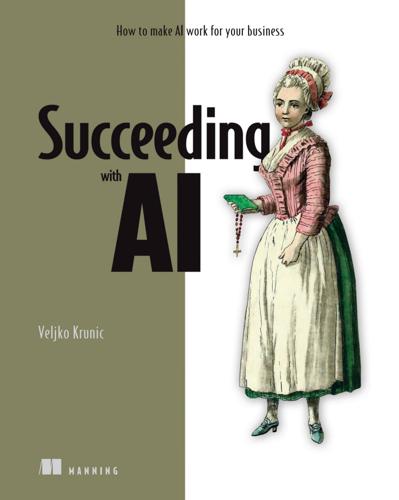
Succeeding With AI: How to Make AI Work for Your Business
by
Veljko Krunic
Published 29 Mar 2020
The material in this book will serve you well for years to come. Is an AI winter coming? AI is not a new field. AI research was founded in 1956 [35]. The field of AI has a history of inflating expectations of what AI can achieve, expectations that subsequently have been unfulfilled. These failures resulted in multiple AI winters, during which AI businesses and AI research suffered. One reference for the history of AI is Domingo’s book [105]. The Wikipedia article [35] also offers a summary of AI history. But as of 2020, AI is riding high. However, there’s always the question of, “Did we finally get it right, or is another AI winter coming?” There are many reasons why this time it will be different (see Lee’s book [9] for some).
…
There are many reasons why this time it will be different (see Lee’s book [9] for some). There’s also no question that some AI projects will fail. So, will there be more AI winters? It depends on how many AI projects succeed and how many of them fail. Success or failure will be determined by whether AI projects deliver business value or not. This book gives you the tools your AI project needs to succeed, and perhaps that will help us to avert another AI winter! What you’ve learned isn’t limited to AI 8.7 213 What you’ve learned isn’t limited to AI The methods discussed in this book are presented in the context of AI projects.
…
AI mistakes 207–211 actuarial vs. instance view 208–209 domain actions 210–211 human role in guiding to business results 214–215 in physical systems 198–203 IoT devices 201–202 safety issues 198–200 security issues 202–203 knowledge base for project management 27–28 AI skills vs. leadership skills 174 prior technical knowledge and 3–4 monetization with 6, 33–37 C part of CLUE 59–60 general principles for 36–37 limitations compared to humans 37 medical diagnostics 34–36 profit curve 96–109 Sense/Analyze/React loop 29–31, 33–38 new capabilities of 31–32 nonprofit sector and 6–7 purpose of book 2–4 qualifications for leaders in 3 relationship to machine learning 8–11, 197 relationship to other fields of business 213–214 accelerometer data 151 Age of Implementation 4–5 AGI (Artificial General Intelligence) 76, 209, 212, 215 AI (artificial intelligence) academic vs. industrial application of 4–5 Age of Implementation 4–5 AutoML 211–212 business metrics 16–18 capabilities of 45–46 knowing results faster 45 perceptual tasks 46 prediction based on current trends 46 structured data 46 unstructured data 46 causality vs. correlations 15–16, 203–206 complex systems 206 counterfactuals 205 incompleteness of data 204 validity of causal relationships 204–205 CLUE 19–21 copying other organizations' solutions 13–14, 76–77 data sources with differing levels of veracity 206–207 evolution of definition 196–197 failed projects 2 fishing for something in data 13–14 focus on infrastructure vs. on business actions 7–8 257 258 INDEX AI (artificial intelligence) (continued) role of in business 29–31 selecting and running projects 21–23 Sense/Analyze/React loop 29–31 starting with choice of analysis 35 understanding possible business actions 11–13 unicorns 47–50 data engineering 48–49 data science 47–48 gap analysis 49–50 AI Effect 197 AI projects 53–81 See also machine learning (ML) pipelines concluding 190–192 three-state, yes/no/maybe classification of results 191–192 timebox approach 191 defining research question 69–73 best practices for business leaders 72–73 contractual language of technical domain 70–72 understanding business concepts 70 evolution of over time 186–190 accounting for influence of time on profit curve 187–188 including time directly in metrics 186–187 timing diagrams 188–190 failing fast 74 impossible to stop in midair 83–85 initiating AI efforts 54–59 forces that teams are subject to 54 look of failure 57–59 look of success 54–56 starting with simple projects 55–57 starting with technically challenging projects 57–59 pitfalls 74–80 CLUE vs. gut feeling 78–80 emulating large companies 76–77 failing to build relationship with business team 75 using advanced tools to look at big data 77–78 using transplants 75–76 prioritizing 59–69 business metrics 65–68 estimating project difficulty 68–69 finding business questions for AI to answer 60–62 methods and data 63–65 software architecture 124 traditional software systems vs. 113–125 challenges amplified in AI projects 117–118 challenges shared by 117 machine learning pipeline in AI projects 113–116 ossification of 118–120 AI Superpowers (Lee) 5 AI winters 212 air quality sensors 104 ambiguous (non-unique) profit curves 155–157 analysis roulette 79 anomaly detection 209 Architecture Tradeoff Analysis Model (ATAM) 124 ARIMA (autoregressive integrated moving average) 130 Artificial General Intelligence (AGI) 76, 209, 212, 215 automation 31 automated data analysis examples of 31–32 poor business cases and 32–33 automated ordering of supplies 114–116 automating part of business process 38–43 AutoML 211–212 employment and 43 non-monotonic profit curves 156 autonomous vehicles 32–40, 42, 198–202, 209 autoregressive integrated moving average (ARIMA) 130 B Best Case/Worst Case analysis 140, 161–162 See also MinMax analysis big data 1–206 all necessary data vs. 65 big data frameworks 7–8, 48–49, 113 cleaning data 184 data lakes 29 using advanced tools to look at 77–78 bike rental system 94–96 constructing profit curve for 99–102 measuring progress on 94–96 black swans 176, 178 Boeing 200 INDEX BPE (Business Performance Excellence) model 17 business actions See also CLUE best practices for business leaders 72–73 considering why you haven’t taken 20–22 fishing for something in data 13–14 focus on infrastructure vs. 7–8 linking AI capabilities with 29, 33, 38, 44–45, 210 linking research questions with 7–19, 85, 87, 94 business decisions based on technical metric 88–90 questions answered by metric 87–88 right business metric 93–94 right research question 87 understandability of business metric 91–93 relationship with business team 75 understanding and defining possible 3–11, 13–22 using to drive analysis 12–13 business metrics 16–18, 82–111 developing to summarize behavior of system 83–84 examples of 16–17, 66 gut feelings vs. 17–18, 85 impossible to stop projects in midair 83–85 inability to define or select 68 linking business and technology 213–214 linking research questions with business problems 85–94 business decisions based on technical metric 88–90 determining you have the right business metric 93–94 determining you have the right research question 87 errors when defining business metrics 93–94 G-MAFIA experiment 90 mental calculations 90 presenting technical metrics at business meetings 89–90 questions answered by metric 87–88 secondary impact of metrics 93–94 surrogate metrics 94 technical metrics that escape into the wild 89 259 understandability of business metric 91–93 linking technical progress with 96–106 need for technical metrics 97 profit curve 97–104 understanding technical results in business terms 105–106 measuring progress on AI projects 94–96 measuring project success with 65–68 organizational considerations when measuring technical progress 106–109 arguments against profit curve 109 information hoarding 108–109 learning vs. being right 108 profit curve improves over time 107 profit curve precision depends on business problem 106 random data vs. 18 technical metrics vs. 20 threshold 67 time sensitivity 85 Business Performance Excellence (BPE) model 17 business process automation 38, 42–43 automating workflow 42 job creation and 43 business questions See also CLUE balancing data, AI methods, and 131–133 finding 38–44, 60–62 linking to research questions 22, 70, 73, 85–94 C caret package 131 causality vs. correlations 203–206 casual models vs. how AIs work 15–16 complex systems 206 counterfactuals 205 incompleteness of data 204 obstacles to wider use of 16 validity of causal relationships 204–205 cleaning data 207 big data 184 improving algorithm vs. 127–128, 184 machine learning pipeline 113, 115–116, 128, 170 cloud services 7, 49, 122, 212 260 CLUE 6, 19–21 Consider (available business actions) 138 dependencies 172 overview of 19 Economize (resources) 21, 138, 140–166 dependencies 172 overview of 20 elements of 19–20, 172 gut feelings vs. 78–80 infrastructure vs. 22 Link (research question and business problem) 85–94, 138, 213 dependencies 172 overview of 19 MinMax analysis economizing resources devoted to 138–140 general process for 148 overview of 172, 175 size of company and 23 substituting with different process 173 Understand (the answer) 20, 138–148 dependencies 172 improving machine learning pipeline over time 187–188 overview of 19–20 understanding technical results in business terms 105–106 Computational Intelligence 197 cost plus pricing 93 counterfactuals 205 D Dalio, Ray 137 data collection considerations for 64 ideal data vs. collected data 65 identifying collectable data 63 in IoT setting vs. enterprise setting 201–202 data engineering and engineers cleaning data vs. improving algorithm 128 estimating project difficulty 68 ossification of machine learning pipeline 118–120 safety issues 210 team dynamics 128–129 unicorns 48–49 data mining CRISP-DM process 31, 133 INDEX data science and scientists acquiring skillsets of data scientists 48 AI methods 130 cleaning data vs. improving algorithm 128 empathy for business audience learning technical metrics 91 estimating project difficulty 210 machine learning 10 profit curve better defined by data science team 103–104 relationship between technical and business metrics 101–102 team dynamics 128–129 unicorns 47–48 Data Science for Business (Provost and Fawcett) 98, 102 decision support system, AI as part of 38–40 danger of 40 helping management team 39–40 deep learning 48, 120, 129, 131, 134, 184, 211 causality vs. correlations 203, 205–206 security issues 202–203 depreciation schedules 100 Derczynski, Leon 157 design of experiments (DOE) 180–181 Drucker, Peter 37 E e-discovery 157–158 EDA (Exploratory Data Analysis) 13 ELT/ETL processes 114–115 expected value of perfect information 85, 137 expert opinion estimates 153 Exploratory Data Analysis (EDA) 13 F factory lines 44 design of experiments 180 machine learning pipeline for 114–116 failing fast 74, 191 Fawcett, T. 102 G gap analysis 49–50 Generative Adversarial Networks (GANs) 202 gesture recognition 151 INDEX global sensitivity analysis 170–171 applicability of 184–185 appropriateness of 176–178 introducing errors 185 not producing best possible result 181–183 GPS 206–207 gut feelings business metrics vs. 17–18 CLUE vs. 78–80 defined 85 H Haenlein, M. 197 Hu, B. 151 Hubbard, D.

The Singularity Is Near: When Humans Transcend Biology
by
Ray Kurzweil
Published 14 Jul 2005
Shaw, and Herbert Simon, which was able to find proofs for theorems that had stumped mathematicians such as Bertrand Russell, and early programs from the MIT Artificial Intelligence Laboratory, which could answer SAT questions (such as analogies and story problems) at the level of college students.163 A rash of AI companies occurred in the 1970s, but when profits did not materialize there was an AI "bust" in the 1980s, which has become known as the "AI winter." Many observers still think that the AI winter was the end of the story and that nothing has since come of the AI field. Yet today many thousands of AI applications are deeply embedded in the infrastructure of every industry. Most of these applications were research projects ten to fifteen years ago; People who ask, "Whatever happened to AI?"
…
Heather Havenstein writes that the "inflated notions spawned by science fiction writers about the convergence of humans and machines tarnished the image of AI in the 1980s because AI was perceived as failing to live up to its potential." Heather Havenstein, "Spring Comes to AI Winter: A Thousand Applications Bloom in Medicine, Customer Service, Education and Manufacturing," Computerworld, February 14, 2005, http://www.computerworld.com/softwaretopics/software/story/0,10801,99691,00.html. This tarnished image led to "AI Winter," defined as "a term coined by Richard Gabriel for the (circa 1990–94?) crash of the wave of enthusiasm for the AI language Lisp and AI itself, following a boom in the 1980s."
…
Duane Rettig wrote: "... companies rode the great AI wave in the early 80's, when large corporations poured billions of dollars into the AI hype that promised thinking machines in 10 years. When the promises turned out to be harder than originally thought, the AI wave crashed, and Lisp crashed with it because of its association with AI. We refer to it as the AI Winter." Duane Rettig quoted in "AI Winter," http://c2.com/cgi/wiki?AiWinter. 163. The General Problem Solver (GPS) computer program, written in 1957, was able to solve problems through rules that allowed the GPS to divide a problem's goals into subgoals, and then check if obtaining a particular subgoal would bring the GPS closer to solving the overall goal.
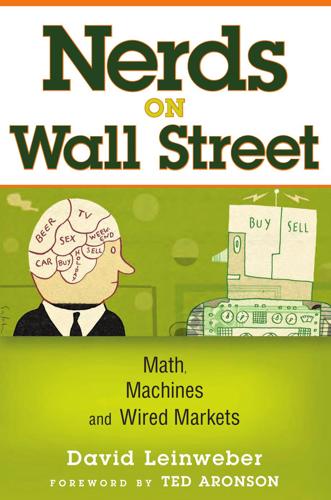
Nerds on Wall Street: Math, Machines and Wired Markets
by
David J. Leinweber
Published 31 Dec 2008
Source: Wall Street Computer Review (now Wall Street & Technology), June 1987 and June 1990. Figure 2.5 The AI industry apologizes to the world, sort of. Source: Published with permission from Parallel Simulation Technology, LLC. All rights reserved. Marvin Minsky, MIT’s AI übermaven, declared an “AI winter” at the major AI conference of 1987. It got so bad that one AI vendor used the image in Figure 2.5 at the same venue. I don’t mean to pick on expert systems or any particular technology here. Neural nets, wavelets, chaos, genetic algorithms, fuzzy logic, and any number of others could be tarred with the same brush used here (though without the charming illustrations).
…
A Little AI Goes a Long Way on Wall Str eet 161 My colleague Dale Prouty, a brilliant Caltech Ph.D. physicist whose metabolism seemed to make his own caffeine, and I quickly realized there was no way LISP systems would fit in trading. Similar realizations, in other contexts, contributed to the AI winter, described in Chapter 2. Dale had heard that PaineWebber’s equity block desk was looking for proposals for an “intelligent hedging advisory system” for the desk. Ideally, the block traders would “go home flat,” with no net long or short exposure to the market, to sectors, or to other common equity factors.
…
The transactions flowing through these systems produced more revenue on a busy day than many other AI applications generated over their entire operational lifetimes. Prehistory of Artificial Intelligence on Wall Street Summer 1987. AI godfather Marvin Minsky warns American Association for Artificial Intelligence (AAAI) Conference attendees in Seattle that “the AI winter will soon be upon us.” This isn’t news to most of them. Many of the pioneer firms have been pared down to near invisibility. AI stocks have dropped so low that Ferraris are being traded in for Yugos in Palo Alto and Cambridge. On Wall Street, the expert systems that were last year’s breakthrough of the century are this year’s R&D write-off.
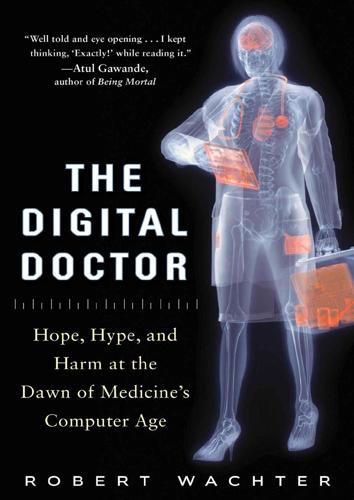
The Digital Doctor: Hope, Hype, and Harm at the Dawn of Medicine’s Computer Age
by
Robert Wachter
Published 7 Apr 2015
See accountable care organizations Adams, Timothy, 231 Adler-Milstein, Julia, 248 Affordable Care Act (ACA), 15, 16, 239 See also Obamacare AI. See artificial intelligence (AI) AI winter, 102, 107 AIDS activists, 195–196 alerts, 134, 143–153, 251 ignoring, 135–137 ways to safely reduce number of alerts, 145–146 Althaus, Deb, 86 Altmann, Erik, 83 American College of Surgeons, 36 APIs, 192–193, 216 application programming interfaces. See APIs Arenson, Ron, 59, 61 Arizona General Hospital, 73 artificial intelligence (AI) AI winter, 102, 107 computers replacing the physician’s brain, 93–104 little AI, 113 See also medical AI athenahealth, 89, 215, 217, 226–231, 233 Augmedix, 180, 240, 241, 242 auscultation, 32, 33 automation hazards of overreliance on, 162–163 irony of, 162 Avrin, David, 50, 51 Bainbridge, Lisanne, 162 Baker, Stephen, 53 bar-coded medication administration (BCMA), 130 Baron, Richard, 68–69, 76–77 Batalden, Paul, 19 Bates, David, 222, 224 Baucus, Max, 16 Bayes, Thomas, 99 Bayes’ theorem, 99 bedside teaching, 35 Bell, Joseph, 97 Benioff, Marc, 233 Berwick, Don, 232 Beth Israel Deaconess Medical Center, 172, 176, 178, 186, 231 big data, 7, 115–123 biometric identifiers, 190 Birkmeyer, John, 79 Blair, Tony, 10, 17 blood tests, 32 bloodletting, 33 Bloom, Paul, 156 Blumenfeld, Barry, 67 Blumenthal, David, 15, 205–208, 235–236, 243–244, 268 Bolten, Josh, 11–12 Boston Children’s Hospital, 144 Brailer, David, 10–14, 18–19, 68, 207, 212 Brigham & Women’s Hospital, 87, 88, 187 Brown, Eric, 103, 118–119, 123 Brynjolfsson, Erik, 94, 250 productivity paradox, 244–245 bundled payments, 59 Burton, Matthew, 1–8, 10, 113 Bush, George W., 9–10, 11–12, 17 Bush, Jonathan, 89, 226–233 Carr, Nicholas, 275 case-mix adjustment, 40 Cedars-Sinai Medical Center, 67–68 CellScope, 240–241, 242 Cerner, 8, 86, 187, 222, 231 Chan, Benjamin, 139–141, 149–153, 155–157 Chang, Paul, 53, 62 the chart, 44–45 The Checklist Manifesto (Gawande), 121–122 Christensen, Clay, 12, 61, 217, 229 clinical research, 263–264 clinical trials, 33 clinicopathologic correlation, 31 Clinton, Hillary, 11 Clinton, William “Bill”, 9, 189 Code Blue, 2–4 Codman, Ernest, 36 cognitive computing, 146 cognitive load, 150–151 complementary innovations, 245 computer systems, replacing the physician’s brain, 93–104 computerized decision support for clinicians, 248, 251, 260 computerized provider order entry (CPOE), 130 “Connecting for Health” initiative, 10, 17 cookbook medicine, 120 Cramer, Jim, 233 creative destruction, 250–251 The Creative Destruction of Medicine (Topol), 250 CT scans, 50–51 quality of images, 52–53 stacking, 53 data.
…
The tools that had seemed so promising a decade earlier were, by and large, unable to manage the complexity of clinical medicine, and they garnered few clinician advocates and miniscule commercial adoption. The medical AI movement skidded to a halt, marking the start of a 20-year period that insiders still refer to as the “AI winter.” Ted Shortliffe, one of the field’s longstanding leaders, has said that the early experience with programs like INTERNIST, DXplain, and MYCIN reminded him of a cartoon that showed an obviously distressed patient who had just been interviewed by a physician. Evidently the poor man had come from an archery field, because protruding from his back was a two-foot-long arrow.
…
First, during Isabel’s hospitalization, he was amazed that the doctors weren’t using computers to prompt them to consider all possible diagnoses. Second, “medicine is beautifully written down. There are very few industries that have textbooks, journals, and all this data on the Internet.” And third, “from my background in finance, I knew about some clever searching software.” I asked Maude whether he was aware of the AI winter—the junkyard of failed computerized diagnostic programs built in the 1970s and 1980s—when he decided to build a medical AI program. He was, but he tried using one of the existing programs and thought, “Well, it’s pretty rubbish.” “I think I’m sort of naturally bloody-minded,” he said, using the British slang for cantankerous.

Driverless: Intelligent Cars and the Road Ahead
by
Hod Lipson
and
Melba Kurman
Published 22 Sep 2016
Over the past several decades, neural network research has come in and out of ideological favor in university computer science departments. AI researchers who dedicated themselves to its pursuit knew they were perhaps embarking on a risky career path. During the periods in which research on neural networks was not viewed as worthwhile, federal research funding would dry up. During these lean years that came to be known as “AI winters,” neural network researchers faced a difficult choice. They could choose to continue their work despite the chilly research climate, or they could shift gears and embrace another more fiscally and professionally rewarding form of artificial-intelligence research. Neural networks To understand the politics that have dogged the development of deep learning, it helps to understand the broader history of neural networks.
…
Rosenblatt’s Perceptron earned him a place in artificial-intelligence history. In my introductory course on machine learning, the first homework assignment is to build a software reincarnation of Rosenblatt’s machine. Yet Rosenblatt’s success, and the resulting media frenzy, brought on the wrath of computer scientists from competing schools of thought. The first AI winter If more researchers in the brand-new field of artificial intelligence had followed Rosenblatt’s approach, we would have succeeded in automating perception decades earlier. Yet shortly after its successful introduction, the Perceptron lost its allure. One reason was that the computing power and sensor data needed to properly train a neural network were still insufficient.
…
But when presented with pictures depicting somewhat similar four-legged animals, the network’s performance would deteriorate to just above randomness, somewhat like a student circling just any answer to get through a multiple-choice exam. Nevertheless, hope springs eternal. Better digital-camera technology combined with the timely release of Werbos’s backprop algorithm sparked new interest in the field of neural-network research, effectively ending the long AI winter of the 1960s and 1970s. If you dig through research papers from the late 1980s and 1990s, you’ll find the relics of this brief period of euphoria. Researchers attempted to apply neural networks to classify everything under the sun: images, text, and sound. Neural-network research, now renamed connectionism, showed up in a wide range of applications, from estimating an applicant’s credit card worthiness to medical diagnosis.

The Big Nine: How the Tech Titans and Their Thinking Machines Could Warp Humanity
by
Amy Webb
Published 5 Mar 2019
Companies shifted their priorities away from time-intensive basic research on general AI to more immediate programs that could solve problems. If the early years following the Dartmouth workshop were characterized by great expectations and optimism, the decades after those damning reports became known as the AI Winter. Funding dried up, students shifted to other fields of study, and progress came to a grinding halt. Even McCarthy became much more conservative in his projections. “Humans can do this kind of thing very readily because it’s built into us,” McCarthy said.31 But we have a much more difficult time understanding how we understand speech—the physical and cognitive processes that make language recognition possible.
…
Therefore, whether or not the birdcage requires a top depends on a few things: the information I give you and all of the associations you already have with the word “bird,” like the fact that most birds fly. We have built-in assumptions and context. Getting AI to respond the same way we do would require a lot more explicit information and instruction.32 The AI Winter would go on to last for three decades.33 What Came Next: Learning to Play Games While funding had dried up, many of the Dartmouth researchers continued their work on AI—and they kept teaching new students. Meanwhile, Moore’s law continued to be accurate, and computers became ever more powerful.
…
James Lighthill, “Artificial Intelligence: A General Survey,” Chilton Computing, July 1972, http://www.chilton-computing.org.uk/inf/literature/reports/lighthill_report/p001.htm. 31. “Mind as Society with Marvin Minsky, PhD,” transcript from “Thinking Allowed, Conversations on the Leading Edge of Knowledge and Discovery, with Dr. Jeffrey Mishlove,” The Intuition Network, 1998, http://www.intuition.org/txt/minsky.htm. 32. Ibid. 33. The AI Winter included new predictions—this time in the form of warnings—for the future. In his book Computer Power and Human Reason, Weizenbaum argued that while artificial intelligence may be possible, we should never allow computers to make important decisions because computers will always lack human qualities such as compassion and wisdom.

Artificial Whiteness
by
Yarden Katz
Yet this pursuit was also under scrutiny by both computing insiders and invested outsiders. Critics asked: Was AI a “science”? Or simply a quest to automate well-defined tasks of industrial production? And when would AI deliver the “human-level intelligence” in machines that invested military patrons so desire? According to conventional accounts, this skepticism led to the so-called AI winter (typically dated to the 1980s), a period when interest in the endeavor had purportedly waned. Recent commentators say AI has recovered at full strength, entering an “eternal spring.”10 But what is AI and how does it work? What drives and sustains AI’s reappearances, its so-called springs and winters?
…
HAUNTED BY AMBIGUITIES The alliance between AI and empire lent the endeavor temporary coherence. It helped make “AI” a commonsensical notion in circles committed to upholding American hegemony. Yet AI’s ambiguous foundations continued to haunt it, threatening to call the field into question. In the 1980s AI’s nebulosity surfaced in the mainstream—an episode quickly labeled “AI winter.” A newspaper article in 1988 described the hesitation on the part of software companies to invoke “AI” because of the “bad press” the label was getting.73 Some investors, frustrated by the apparent failure to commercialize expert systems, blamed it on the term. One entrepreneur who had raised millions for an expert system company said the rush over AI was a “mass delusion” fueled by an ill-defined label: “In the 17th century, people said ‘tulips’ and the world went nuts.
…
One entrepreneur who had raised millions for an expert system company said the rush over AI was a “mass delusion” fueled by an ill-defined label: “In the 17th century, people said ‘tulips’ and the world went nuts. AI was a more virulent case because it was more difficult to define.”74 Contrary to standard accounts of “AI winter,” the activities that fell under “AI” did not cease in the face of this doubt. Even reports from the midst of so-called winter indicate that some companies simply “folded their AI operations into another division.”75 Moreover, expert systems, then advertised as the hallmark of “AI,” were still being widely promoted for their commercial value.

Ghost Road: Beyond the Driverless Car
by
Anthony M. Townsend
Published 15 Jun 2020
“I have set the date 2045 for the ‘Singularity’ which is when we will multiply our effective intelligence a billion fold by merging with the intelligence we have created.” More revisions to the timetable may be in store. Reports of an imminent “AI winter” are probably overblown—almost no one in the field expects a return to those repeated periods of disillusionment with the technology that occurred several times from the early 1970s through the late 1990s. But there’s a gathering unease about the pace of AI development. During the AI winters, researchers cooked up euphemistic names like “machine learning” to disguise the true nature of their AI work from funders. But today’s anxieties stem from a fuller reckoning of techniques that are widely appreciated in the AI community but whose capabilities are poorly understood beyond.
…
(Honolulu: University of Hawaii Press, 1991), 3–25. 206“bringing remote storage locations”: “Automated Trucking: A CBRE Research Perspective,” CBRE, November 17, 2017, http://www.cbre.us/real-estate-services/real-estate-industries/industrial-and-logistics/industrial-and-logistics-research/automated-trucking. 206“service firms should locate”: CBRE, “Automated Trucking.” 206“In order to feed, maintain, and entertain”: Rem Koolhaas, “The World in 2018,” The Economist, November 28, 2017, 153. 208“Rather than building AI”: Russell Brandom, “Self-Driving Cars Are Headed Toward an AI Roadblock,” The Verge, July 3, 2018, https://www.theverge.com/2018/7/3/17530232/self-driving-ai-winter-full-autonomy-waymo-tesla-uber. 209The term jaywalking: “Why Jaywalking Is Called Jaywalking,” Merriam-Webster, accessed May 23, 2019, https://www.merriam-webster.com/words-at-play/why-is-it-called-jaywalking. 209weaponized by automobile interests: Peter Norton, Fighting Traffic: The Dawn of the Motor Age in the American City (Cambridge, MA: MIT Press, 2011), 210. 209another separate guideway: Kiger, “Designing for the Driverless Age.” 209“argued for dense multilevel traffic”: “New York Modern,” The Skyscraper Museum, October 24, 2007, https://www.skyscraper.org/EXHIBITIONS/FUTURE_CITY/new_york_modern.htm. 210“the first place in the world”: Sidewalk Labs, RFP Submission for Waterfront Toronto (New York: Sidewalk Labs, 2017), 144. 210“Carriage squares”: Renate van der Zee, “Story of Cities #30: How This Amsterdam Inventor Gave Bike-Sharing to the World,” The Guardian, April 26, 2016, https://www.theguardian.com/cities/2016/apr/26/story-cities-amsterdam-bike-share-scheme. 210“a small zone that will serve”: Sidewalk Labs, RFP Submission for Waterfront Toronto, 144. 211the “beeping monster”: Shirley Zhao, “Tech Worries Throw Future of Hong Kong’s First Driverless Electric Bus Route into Doubt,” South China Morning Post, March 31, 2019, https://www.scmp.com/news/hong-kong/transport/article/3003944/driverless-electric-bus-fails-create-buzz-hong-kong. 211“Purchases are deposited at freight delivery centres”: Sustainable Urban Mobility Research Laboratory, “Shared World,” Singapore University of Technology and Design, accessed January 6, 2019, https://mobility. sutd.edu.sg/shared_world/. 211the unbuilt Minnesota Experimental City: David Grossman, “The Time Minnesota Almost Built a Doomed, Future City,” Popular Mechanics, March 31, 2018, https://www.popularmechanics.com/technology/infrastructure/a19642881/spilhaus-experimental-city-documentary/. 9.
…
See artificial intelligence AirCloset, 148 Alexander, Christopher, 101 Alibaba, 11, 115, 118–19, 147 Alstom, 60, 104 Amazon Amazon Day promotion, 132, 219 Amazon Go stores, 183, 220 Amazon’s Web Services division (AWS), 86 Basics brands, 138 fulfillment centers, 123, 132, 136–37, 196n Key, 118, 127 Kiva AV warehouse sleds, 136–37 market capitalization, 118 package lockers, 127, 219, 221 predatory practices, 219, 223 Prime, 118, 119, 132, 219 Prime Fresh grocery-delivery service, 116 product sales in 2018, 118 same-day delivery, 119, 138, 219 separation of humans and AVs, 241–42 shipping costs, 119, 219 Whole Foods acquisition, 219–20 American Automobile Association, 45 American Trucking Associations, 156 American Wonder, 5 America’s Workforce and the Self-Driving Future, 154 Amsterdam, 63, 210, 222 Apple self-driving vehicle project, 8 Archimedes, 169 Arma (Navya), 103–4, 104 artificial intelligence (AI) AI winters, 235 human-machine hybrids, 46, 153 machine learning, 7, 36, 152–53, 235, 238 online experiences and, 81 singletons, 237–38 Singularity predictions, 234–35, 236–38 and task model for computerization of work, 152–54 in urban ushers, 78 use in persuasion, 152 see also deep learning Atlas Shrugged (Rand), 221–22 Audi, 30, 31 auto-manufacturing industry consumer-protection laws and, 25 disruption by driverless revolution, 19 and financial crisis of 2007–2008, 7 new methods of manufacturing, 54 personal transportation services, 11 predicted new-car sales decline, 11 small firms and new methods, 54 vehicular variety increase and, 54–55 automated ground vehicles (AGVs).

Thinking Machines: The Inside Story of Artificial Intelligence and Our Race to Build the Future
by
Luke Dormehl
Published 10 Aug 2016
As the psychologist Steven Pinker summed it up: ‘The main lesson of [the first] thirty-five years of AI research is that the hard problems are easy and the easy problems are hard.’ Changing Ambitions Facing these kinds of challenges, Good Old-Fashioned AI started to run into problems. From the 1970s, the field cooled off as the optimism of previous decades dissipated. Budgets were brutally slashed, plunging Artificial Intelligence into the first of several so-called ‘AI Winters’. In the United States, even the lovable SHAKEY the robot project shuddered to a halt when it became clear that it was not the robotic James Bond spy its funders at the Defense Department had hoped for. Forget spying, SHAKEY couldn’t even replace regular troops on the battlefield! One researcher who worked on the project remembers some military types coming in for a last-ditch look at SHAKEY rolling around the laboratory at its research institute, SRI International.
…
The brain does the same, only with networks of neurons instead of beams of light. This observation led Hinton to study physiology and psychology at Cambridge and then Artificial Intelligence at the University of Edinburgh in Scotland. He arrived in the chilly city of Edinburgh in the mid-1970s, appropriately enough just at the time the first AI winter was setting in. Despite the blow that Good Old-Fashioned AI had just suffered, Hinton’s doctoral supervisor desperately tried to steer him away from neural networks. ‘He kept trying to get me to give up on them and switch to symbolic AI,’ he says. ‘We kept making deals where I would get to do neural nets for a little bit longer.’
…
To find a specific word or phrase from the index, please use the search feature of your ebook reader. 2001: A Space Odyssey (1968) 2, 228, 242–4 2045 Initiative 217 accountability issues 240–4, 246–8 Active Citizen 120–2 Adams, Douglas 249 Advanced Research Projects Agency (ARPA) 19–20, 33 Affectiva 131 Age of Industry 6 Age of Information 6 agriculture 150–1, 183 AI Winters 27, 33 airlines, driverless 144 algebra 20 algorithms 16–17, 59, 67, 85, 87, 88, 145, 158–9, 168, 173, 175–6, 183–4, 186, 215, 226, 232, 236 evolutionary 182–3, 186–8 facial recognition 10–11, 61–3 genetic 184, 232, 237, 257 see also back-propagation AliveCor 87 AlphaGo (AI Go player) 255 Amazon 153, 154, 198, 236 Amy (AI assistant) 116 ANALOGY program 20 Analytical Engine 185 Android 59, 114, 125 animation 168–9 Antabi, Bandar 77–9 antennae 182, 183–5 Apple 6, 35, 56, 65, 90–1, 108, 110–11, 113–14, 118–19, 126–8, 131–2, 148–9, 158, 181, 236, 238–9, 242 Apple iPhone 108, 113, 181 Apple Music 158–9 Apple Watch 66, 199 architecture 186 Artificial Artificial Intelligence (AAI) 153, 157 Artificial General Intelligence (AGI) 226, 230–4, 239–40, 254 Artificial Intelligence (AI) 2 authentic 31 development problems 23–9, 32–3 Good Old-Fashioned (Symbolic) 22, 27, 29, 34, 36, 37, 39, 45, 49–52, 54, 60, 225 history of 5–34 Logical Artificial Intelligence 246–7 naming of 19 Narrow/Weak 225–6, 231 new 35–63 strong 232 artificial stupidity 234–7 ‘artisan economy’ 159–61 Asimov, Isaac 227, 245, 248 Athlone Industries 242 Atteberry, Kevan J. 112 Automated Land Vehicle in a Neural Network (ALVINN) 54–5 automation 141, 144–5, 150, 159 avatars 117, 193–4, 196–7, 201–2 Babbage, Charles 185 back-propagation 50–3, 57, 63 Bainbridge, William Sims 200–1, 202, 207 banking 88 BeClose smart sensor system 86 Bell Communications 201 big business 31, 94–6 biometrics 77–82, 199 black boxes 237–40 Bletchley Park 14–15, 227 BMW 128 body, machine analogy 15 Bostrom, Nick 235, 237–8 BP 94–95 brain 22, 38, 207–16, 219 Brain Preservation Foundation 219 Brain Research Through Advanced Innovative Neurotechnologies 215–16 brain-like algorithms 226 brain-machine interfaces 211–12 Breakout (video game) 35, 36 Brin, Sergey 6–7, 34, 220, 231 Bringsjord, Selmer 246–7 Caenorhabditis elegans 209–10, 233 calculus 20 call centres 127 Campbell, Joseph 25–6 ‘capitalisation effect’ 151 cars, self-driving 53–56, 90, 143, 149–50, 247–8 catering 62, 189–92 chatterbots 102–8, 129 Chef Watson 189–92 chemistry 30 chess 1, 26, 28, 35, 137, 138–9, 152–3, 177, 225 Cheyer, Adam 109–10 ‘Chinese Room, the’ 24–6 cities 89–91, 96 ‘clever programming’ 31 Clippy (AI assistant) 111–12 clocks, self-regulating 71–2 cognicity 68–9 Cognitive Assistant that Learns and Organises (CALO) 112 cognitive psychology 12–13 Componium 174, 176 computer logic 8, 10–11 Computer Science and Artificial Intelligence Laboratory (CSAIL) 96–7 Computer-Generated Imagery (CGI) 168, 175, 177 computers, history of 12–17 connectionists 53–6 connectomes 209–10 consciousness 220–1, 232–3, 249–51 contact lenses, smart 92 Cook, Diane 84–6 Cook, Tim 91, 179–80 Cortana (AI assistant) 114, 118–19 creativity 163–92, 228 crime 96–7 curiosity 186 Cyber-Human Systems 200 cybernetics 71–4 Dartmouth conference 1956 17–18, 19, 253 data 56–7, 199 ownership 156–7 unlabelled 57 death 193–8, 200–1, 206 Deep Blue 137, 138–9, 177 Deep Knowledge Ventures 145 Deep Learning 11–12, 56–63, 96–7, 164, 225 Deep QA 138 DeepMind 35–7, 223, 224, 245–6, 255 Defense Advanced Research Projects Agency (DARPA) 33, 112 Defense Department 19, 27–8 DENDRAL (expert system) 29–31 Descartes, René 249–50 Dextro 61 DiGiorgio, Rocco 234–5 Digital Equipment Corporation (DEC) 31 Digital Reasoning 208–9 ‘Digital Sweatshops’ 154 Dipmeter Advisor (expert system) 31 ‘do engines’ 110, 116 Dungeons and Dragons Online (video game) 197 e-discovery firms 145 eDemocracy 120–1 education 160–2 elderly people 84–6, 88, 130–1, 160 electricity 68–9 Electronic Numeric Integrator and Calculator (ENIAC) 12, 13, 92 ELIZA programme 129–30 Elmer and Elsie (robots) 74–5 email filters 88 employment 139–50, 150–62, 163, 225, 238–9, 255 eNeighbor 86 engineering 182, 183–5 Enigma machine 14–15 Eterni.me 193–7 ethical issues 244–8 Etsy 161 Eurequa 186 Eve (robot scientist) 187–8 event-driven programming 79–81 executives 145 expert systems 29–33, 47–8, 197–8, 238 Facebook 7, 61–2, 63, 107, 153, 156, 238, 254–5 facial recognition 10–11, 61–3, 131 Federov, Nikolai Fedorovich 204–5 feedback systems 71–4 financial markets 53, 224, 236–7 Fitbit 94–95 Flickr 57 Floridi, Luciano 104–5 food industry 141 Ford 6, 230 Foxbots 149 Foxconn 148–9 fraud detection 88 functional magnetic resonance imaging (fMRI) 211 Furbies 123–5 games theory 100 Gates, Bill 32, 231 generalisation 226 genetic algorithms 184, 232, 237, 257 geometry 20 glial cells 213 Go (game) 255 Good, Irving John 227–8 Google 6–7, 34, 58–60, 67, 90–2, 118, 126, 131, 155–7, 182, 213, 238–9 ‘Big Dog’ 255–6 and DeepMind 35, 245–6, 255 PageRank algorithm 220 Platonic objects 164, 165 Project Wing initiative 144 and self-driving cars 56, 90, 143 Google Books 180–1 Google Brain 61, 63 Google Deep Dream 163–6, 167–8, 184, 186, 257 Google Now 114–16, 125, 132 Google Photos 164 Google Translate 11 Google X (lab) 61 Government Code and Cypher School 14 Grain Marketing Adviser (expert system) 31 Grímsson, Gunnar 120–2 Grothaus, Michael 69, 93 guilds 146 Halo (video game) 114 handwriting recognition 7–8 Hank (AI assistant) 111 Hawking, Stephen 224 Hayworth, Ken 217–21 health-tracking technology 87–8, 92–5 Healthsense 86 Her (film, 2013) 122 Herd, Andy 256–7 Herron, Ron 89–90 High, Rob 190–1 Hinton, Geoff 48–9, 53, 56, 57–61, 63, 233–4 hive minds 207 holograms 217 HomeChat app 132 homes, smart 81–8, 132 Hopfield, John 46–7, 201 Hopfield Nets 46–8 Human Brain Project 215–16 Human Intelligence Tasks (HITs) 153, 154 hypotheses 187–8 IBM 7–11, 136–8, 162, 177, 189–92 ‘IF THEN’ rules 29–31 ‘If-This-Then-That’ rules 79–81 image generation 163–6, 167–8 image recognition 164 imagination 178 immortality 204–7, 217, 220–1 virtual 193–8, 201–4 inferences 97 Infinium Robotics 141 information processing 208 ‘information theory’ 16 Instagram 238 insurance 94–5 Intellicorp 33 intelligence 208 ambient 74 ‘intelligence explosion’ 228 top-down view 22, 25, 246 see also Artificial Intelligence internal combustion engine 140–1, 150–1 Internet 10, 56 disappearance 91 ‘Internet of Things’ 69, 70, 83, 249, 254 invention 174, 178, 179, 182–5, 187–9 Jawbone 78–9, 92–3, 254 Jennings, Ken 133–6, 138–9, 162, 189 Jeopardy!

Our Final Invention: Artificial Intelligence and the End of the Human Era
by
James Barrat
Published 30 Sep 2013
AGI defeaters cluster around two ideas: economics and software complexity. The first, economics, considers that funds won’t be available to get from narrow AI to the far more complex and powerful cognitive architectures of AGI. Few AGI efforts are well-funded. This prompts a subset of researchers to feel that their field is stuck in the endless stall of a so-called AI winter. They’ll escape if the government or a corporation like IBM or Google considers AGI a priority of the first order, and undertakes a Manhattan Project–sized effort to achieve it. During World War II, fast-tracking atomic weapons development cost the U.S. government about $2 billion dollars, in today’s valuation, and employed around 130,000 people.
…
Barring some other bottleneck, the world’s economy will be driven by the creation of strong artificial intelligence, and fueled by the growing global apprehension of all the ways it will change our lives. Up ahead we’ll explore another critical roadblock—software complexity. We’ll find out if the challenge of creating software architectures that match human-level intelligence is just too difficult to conquer, and whether or not all that stretches out ahead is a perpetual AI winter. Chapter Twelve The Last Complication How can we be so confident that we will build superintelligent machines? Because the progress of neuroscience makes it clear that our wonderful minds have a physical basis, and we should have learned by now that our technology can do anything that’s physically possible.
…
But today, if you suddenly removed all AI from these industries, you couldn’t get a loan, your electricity wouldn’t work, your car wouldn’t go, and most trains and subways would stop. Drug manufacturing would creak to a halt, faucets would run dry, and commercial jets would drop from the sky. Grocery stores wouldn’t be stocked, and stocks couldn’t be bought. And when were all these AI systems implemented? During the last thirty years, the so-called AI winter, a term used to describe a long decline in investor confidence, after early, overly optimistic AI predictions proved false. But there was no real winter. To avoid the stigma of the label “artificial intelligence,” scientists used more technical names like machine learning, intelligent agents, probabilistic inference, advanced neural networks, and more.

Superintelligence: Paths, Dangers, Strategies
by
Nick Bostrom
Published 3 Jun 2014
The Fifth-Generation Project failed to meet its objectives, as did its counterparts in the United States and Europe. A second AI winter descended. At this point, a critic could justifiably bemoan “the history of artificial intelligence research to date, consisting always of very limited success in particular areas, followed immediately by failure to reach the broader goals at which these initial successes seem at first to hint.”21 Private investors began to shun any venture carrying the brand of “artificial intelligence.” Even among academics and their funders, “AI” became an unwanted epithet.22 Technical work continued apace, however, and by the 1990s, the second AI winter gradually thawed. Optimism was rekindled by the introduction of new techniques, which seemed to offer alternatives to the traditional logicist paradigm (often referred to as “Good Old-Fashioned Artificial Intelligence,” or “GOFAI” for short), which had focused on high-level symbol manipulation and which had reached its apogee in the expert systems of the 1980s.
…
The performance of these early systems also suffered because of poor methods for handling uncertainty, reliance on brittle and ungrounded symbolic representations, data scarcity, and severe hardware limitations on memory capacity and processor speed. By the mid-1970s, there was a growing awareness of these problems. The realization that many AI projects could never make good on their initial promises led to the onset of the first “AI winter”: a period of retrenchment, during which funding decreased and skepticism increased, and AI fell out of fashion. A new springtime arrived in the early 1980s, when Japan launched its Fifth-Generation Computer Systems Project, a well-funded public–private partnership that aimed to leapfrog the state of the art by developing a massively parallel computing architecture that would serve as a platform for artificial intelligence.
…
More than 150,000 academic papers have since been published on artificial neural networks, and they continue to be an important approach in machine learning. Evolution-based methods, such as genetic algorithms and genetic programming, constitute another approach whose emergence helped end the second AI winter. It made perhaps a smaller academic impact than neural nets but was widely popularized. In evolutionary models, a population of candidate solutions (which can be data structures or programs) is maintained, and new candidate solutions are generated randomly by mutating or recombining variants in the existing population.

I, Warbot: The Dawn of Artificially Intelligent Conflict
by
Kenneth Payne
Published 16 Jun 2021
A paradox was emerging: tasks that humans struggled with—like statistical analysis, or probabilistic reasoning—could be crunched in moments, even by these early computers. But tasks that humans found incredibly easy—moving, grasping, even seeing—were proving altogether beyond even the most advanced machines. Even translation was proving difficult. The first of several so-called ‘AI winters’ set in during the 1970s, when the limits of this approach to AI became apparent. Shakey was impressive, but in Vietnam war was raging, and even the Pentagon’s deep pockets were not bottomless. DARPA abruptly cut funding from ‘basic’ research on AI—the sort of projects the superstar team behind Shakey was interested in.
…
The approach revived AI research, bringing new funding and new commercial opportunities—including in defence. There was no new underlying philosophy of intelligence—this was still essentially symbolic processing. Still, the addition of richly detailed information made a big difference. After the decade-long AI winter of the 1970s, DARPA’s interest in expert systems led to a new round of investment in what it termed the ‘Strategic Computing’ programme.21 The name was something of a misnomer—the computers weren’t about to take over strategy like WOPR in War Games, but to carry out particular military tasks. This time the goal was to have fielded systems, not basic research on abstract phenomena.
…
Anything demanding greater insight and understanding was not remotely feasible. After half a century of research, for the military at least, AI remained a souped-up calculator, not a strategic genius. As the 1990s began, the Pentagon’s expert system programme went into terminal decline. For the second time in its short history, AI reality had not matched the hype. A new AI winter loomed. But all that was about to change. DEEP WARBOTS On the highway outside Kuwait City, the smouldering remains of Republican Guard vehicles stood as a sombre testament to the power of computer networked warfare. It was 1991, and Saddam Hussein’s battle-hardened army had been utterly routed in a matter of days by an American-led coalition.

AI Superpowers: China, Silicon Valley, and the New World Order
by
Kai-Fu Lee
Published 14 Sep 2018
A BRIEF HISTORY OF DEEP LEARNING Machine learning—the umbrella term for the field that includes deep learning—is a history-altering technology but one that is lucky to have survived a tumultuous half-century of research. Ever since its inception, artificial intelligence has undergone a number of boom-and-bust cycles. Periods of great promise have been followed by “AI winters,” when a disappointing lack of practical results led to major cuts in funding. Understanding what makes the arrival of deep learning different requires a quick recap of how we got here. Back in the mid-1950s, the pioneers of artificial intelligence set themselves an impossibly lofty but well-defined mission: to recreate human intelligence in a machine.
…
The turning point came in 2012, when a neural network built by Hinton’s team demolished the competition in an international computer vision contest. After decades spent on the margins of AI research, neural networks hit the mainstream overnight, this time in the form of deep learning. That breakthrough promised to thaw the ice from the latest AI winter, and for the first time truly bring AI’s power to bear on a range of real-world problems. Researchers, futurists, and tech CEOs all began buzzing about the massive potential of the field to decipher human speech, translate documents, recognize images, predict consumer behavior, identify fraud, make lending decisions, help robots “see,” and even drive a car.
…
Index A | B | C | D | E | F | G | H | I | J | K | L | M | N | O | P | Q | R | S | T | U | V | W | X | Y | Z A Africa, 138, 139, 169 age of data, 14, 18, 56 age of implementation Chinese entrepreneurs and, 16, 18, 25 Chinese government and, 18 data and, 17, 20, 55, 80 deep learning and, 13–14, 143 going light vs. going heavy, 71 AGI (artificial general intelligence), 140–44 AI. See artificial intelligence (AI) AI engineers, 14 Airbnb, 39, 49, 73 AI revolution deep learning and, 5, 25, 92, 94, 143 economic impact of, 151–52 speed of, 152–55 AI winters, 6–7, 8, 9, 10 algorithmic bias, 229 algorithms, AI AI revolution and, 152–53 computing power and, 14, 56 credit and, 112–13 data and, 14, 17, 56, 138 fake news detection by, 109 intelligence sharing and, 87 legal applications for, 115–16 medical diagnosis and, 114–15 as recommendation engines, 107–8 robot reporting, 108 white-collar workers and, 167, 168 Alibaba Amazon compared to, 109 Chinese startups and, 58 City Brain, 93–94, 117, 124, 228 as dominant AI player, 83, 91, 93–94 eBay and, 34–35 financial services spun off from, 73 four waves of AI and, 106, 107, 109 global markets and, 137 grid approach and, 95 Microsoft Research Asia and, 89 mobile payments transition, 76 New York Stock Exchange debut, 66–67 online purchasing and, 68 success of, 40 Tencent’s “Pearl Harbor attack” on, 60–61 Wang Xing and, 24 Alipay, 35, 60, 69, 73–74, 75, 112, 118 Alphabet, 92–93 AlphaGo, 1–4, 5, 6, 11, 199 AlphaGo Zero, 90 Altman, Sam, 207 Amazon Alibaba compared to, 109 Chinese market and, 39 data captured by, 77 as dominant AI player, 83, 91 four waves of AI and, 106 grid approach and, 95 innovation mentality at, 33 monopoly of e-commerce, 170 online purchasing and, 68 Wang Xing and, 24 warehouses, 129–30 Amazon Echo, 117, 127 Amazon Go, 163, 213 Anderson, Chris, 130 Andreesen Horowitz, 70 Ant Financial, 73 antitrust laws, 20, 28, 171, 229 Apollo project, 135 app constellation model, 70 Apple, 33, 75, 117, 126, 143, 177, 184 Apple Pay, 75, 76 app-within-an-app model, 59 ARM (British firm), 96 Armstrong, Neil, 3 artificial general intelligence (AGI), 140–44 artificial intelligence (AI) introduction to, ix–xi See also China; deep learning; economy and AI; four waves of AI; global AI story; human coexistence with AI; new world order artificial superintelligence.

Empire of AI: Dreams and Nightmares in Sam Altman's OpenAI
by
Karen Hao
Published 19 May 2025
GO TO NOTE REFERENCE IN TEXT Each time the roadblocks mounted: There isn’t one unified history of when each AI winter was. Generally speaking, the first one is considered to have been during the ’70s, triggered by a 1973 British Science Research Council report from Professor Sir James Lighthill of the University of Cambridge, called “Artificial Intelligence: A General Survey.” In it, Lighthill observed, “In no part of the AI field have discoveries made so far produced the major impact that was then promised.” The second AI winter was roughly in the late ’80s to early ’90s. Some scholars argue that during that time, while funding dried up for research labeled as “AI,” money was still going toward the development of relevant techniques under different names.
…
But during various stretches, advancements in symbolic AI systems would sputter and slow as efforts to scale them hit up against the challenges of manually encoding all the rules. How does one encode all the subtleties of the English language with its slang, sarcasm, figures of speech, and grammar exceptions? Each time the roadblocks mounted, funders would lose interest, plunging the field into a state of existential crisis known as an “AI winter.” * * * — At this point in the story, the history of AI is often told as the triumph of scientific merit over politics. Minsky may have used his stature and platform to quash connectionism, but the strengths of the idea itself eventually allowed it to rise to the top and take its rightful place as the bedrock of the modern AI revolution.
…
Some scholars argue that during that time, while funding dried up for research labeled as “AI,” money was still going toward the development of relevant techniques under different names. Some researchers also point to further AI winters. Stanford professor and AI luminary Fei-Fei Li describes the late ’90s as a third one in her book: Fei-Fei Li, The Worlds I See: Curiosity, Exploration, and Discovery at the Dawn of AI (Flatiron Books, 2023), 89–90. GO TO NOTE REFERENCE IN TEXT Tech giants were already seeing: Author interview with Geoffrey Hinton, August 2023. GO TO NOTE REFERENCE IN TEXT But alongside these impressive advances: Shoshana Zuboff, The Age of Surveillance Capitalism: The Fight for a Human Future at the New Frontier of Power (PublicAffairs, 2019), 1–704.
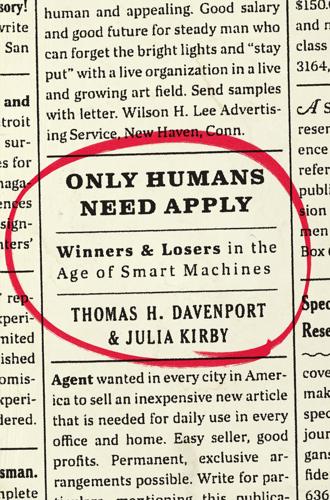
Only Humans Need Apply: Winners and Losers in the Age of Smart Machines
by
Thomas H. Davenport
and
Julia Kirby
Published 23 May 2016
As we’ll see, there will remain plenty of opportunities to work with smart machines that don’t yet have it all. Ode to AI Spring For the sellers of smart machines, if we may slightly paraphrase Gerard Manley Hopkins, nothing is so beautiful as AI spring. The observation that artificial intelligence has its seasons of enthusiasm and also (in AI winter) of despair has become commonplace; by most accounts, the term “AI winter” was first coined as an allusion to nuclear winter, a level of devastation that seemed analogous when a slew of AI-related companies that had been founded in the 1970s all went bust in the early 1980s. By later in that same decade, a thaw was beginning. (In 1988, for example, Time magazine had AI back on its cover with an in-depth story called “Putting Knowledge to Work.”)
…
Accenture, 83, 102, 134, 183 Adrià, Ferran, 122 Aetna, 83 AI (film), 125 Ainge, Danny, 117 Allen, Robbie, 97 Allstate, 94, 103–4 Amazon Echo, 167 Amazon Robotics (Kiva Systems), 2–3 Amplify, 20 “Analytics 3.0,” 42–43 Analytics Revolution, The (Franks), 43 AnalytixInsight, 22 Anders, George, 120 Anthem, 15, 84 Aplin, Ken, 153–54 Apollo Guidance Computer, 67 Apple, 63 Archilochus, 171 architect jobs, 23, 24–25, 151 Ariely, Dan, 113 Armstrong, Stuart, 226, 249 Arnett, Thomas, 84 artificial intelligence, 7, 26, 33–58, 141, 163, 189. See also cognitive technologies; computers “AI winter,” 36 Apollo flights and, 67 Asimov’s three laws for, 244 augmentation of soft skills and, 123 automating administrative tasks and, 216 broadening the base of methods, 194 cancer cure and, 60–61 consequences of, 243–46, 249–50 cost to build, 155 in education, 230 endowing with emotions, 246 expert systems, 37 fighter pilots and, 66 human attributes, 124–27, 245 human control of, 244–45 investing by, 92–93 move from “narrow” to “general,” 35 programmers, 178 regulatory oversight of, 246–49 researchers and, 181 Ruby programming language, 222 self-awareness and AI spring, 54–57 social memory, 123 society-level decisions about, 226–28 term use and branches of, 37–38 Thiel on, 243 universe model and KIGEN, 59 warnings and predictions about, 225–26 Warren, 20 (see also IBM Watson) artists, 24, 119, 238 Asimov, Isaac, 244 Associated Press (AP) automated journalism, 96–98, 103, 104, 121, 222 investing in automated publishing, 97 Atlas, David, 121 Auerbach, Red, 116–17 Auerswald, Phil, 128 augmentation, 31–32, 59–88, 201–24, 234 “automation leader” for, 221–23 automation vs., 61–63, 128–29, 204–8, 223–24 cutting both ways, 70–74 defined, 64–65 example, spreadsheets, 69–70 example, underwriting, 77–84, 218–19 five options for, 76–77, 218 forms of, 65–69, 209 as goal, 228–29 in governance, 249–51 government policies and, 229–43 human-machine partnership, 68, 203, 234, 235, 237, 239, 250, 251 implementing, steps for, 208–23 key capabilities of humans and, 71–73 less work not likely with, 69–70 “moon shots,” 210, 215–16 as organizational priority, 203–4 preparing employees for, 219 proofs of concept or pilots, 220–21 reasons for augmentation, 204–8 smart machines and job security, 59–61 Stepping Aside, 77, 81, 85, 87, 108–30 Stepping Forward, 77, 83–86, 88, 176–200 Stepping In, 77, 81–82, 85, 87, 131–52 Stepping Narrowly, 77, 82, 85, 87–88, 153–75 Stepping Up, 76–77, 80, 84–86, 89–107 three forms, for specialization, 166–69 as wheels for the mind, 63–65 Augmentation Research Center, 64 “Augmenting Human Intellect” (Engelbart), 64 Automated Insights, 22, 97 Wordsmith, 96 automation, 1, 3–4, 5, 6, 8, 12–13 augmentation vs., 61–63, 128–29, 204–8, 223–24 business process management, 40 codified tasks and, 12–13, 14, 27–28, 30 content transmission and, 19–20 eras of, 2–5 government policies and, 229–43 income inequality and, 228–29 “isolation syndrome,” 24 job losses and, 1–6, 8, 30, 78, 150–51, 167, 223–24, 226, 227, 238 jobs resistant to, 153–75 process automation, 48–49 “race against the machine,” 8, 29 reductions in cost and time, 48, 49 regulated sectors and legal constraints on, 213–15 repetitive task, 42, 47–48, 49, 50 robotic process, 48–49, 187, 221, 222–23 “rule engines,” 47 sectors using, 1, 11–12, 13, 18, 74, 201–3 (see also specific industries) signs of coming automation, 19–22 Stepping Forward with, 176–200 Stepping In with, 134–52 Stepping Up and, 91–95 strategy of, as self-defeating, 204–8 strongest evidence of job threat, 19 Automation Anywhere, 48, 216 automotive sector, 1 Autor, David, 70–71 Balaporia, Zahir, 189–91 Bankrate.com, 96 Bathgate, Alastair, 156, 157 Baylor College of Medicine, 212 Beaudry, Paul, 6, 24 Belmont, Chris, 209 Berg company, 60–61 Berlin, Isaiah, 171 Bernanke, Ben, 28, 42, 73 Bernaski, Michael, 79, 80, 81, 82, 187 Bessen, James, 133, 233 Betterment, 86–87, 198 big-picture perspective, 71, 75, 76–77, 84, 91, 92, 99, 100, 155 Stepping Up and, 98–100 Binsted, Kim, 125 “black box,” 95, 134, 139, 148, 192, 198 Blanke, Jennifer, 7 Blue Prism, 49, 156, 216, 221 Bohrer, Abram, 159 Bostrom, Nick, 226, 227 Brackett, Glenn, 128 Braverman, Harry, 15–16 Breaking Bad (TV show), 172 Brem, Rachel, 181–82 Bridgewater Associates, 92–93 Brooks, David, 241 Brooks, Rodney, 170, 182 Brown, John Seely, 237 Brynjolfsson, Erik, 6, 8, 27, 74 Bryson, Joanna J., 226 Buehner, Carl, 120 Buffett, Warren, 244 Bush, Vannevar, 64, 248 Bustarret, Claire, 154 BYOD (Bring Your Own Device), 13 Cameron, James, 165–66 Carey, Greg, 154, 156, 172–73 Carr, Nick, 162 CastingWords, 168 Catanzaro, Sandro, 179–80, 193 Cathcart, Ron, 89–91, 95 Cerf, Vint, 248 Chambers, Joshua, 250 Charles Schwab, 88 chess, 74–76 Chi, Michelene, 163 Chicago Mercantile Exchange, 11–12 Chilean miners, 201–2 China, 239 Chiriac, Marcel, 217 Circle (Internet start-up), 146 Cisco, 43 Civilian Conservation Corps (CCC), 238 “Claiming our Humanity in the Digital Age,” 248 Class Dojo, 141 Cleveland Clinic, 54 Clifton, Jim, 8 Clinton, Bill, 108 Clockwork Universe, The (Dolnick), 169–70 Codelco/Codelco Digital, 40, 201–3 Cognex, 47 CognitiveScale, 45, 194, 209 cognitive technologies, 4–5, 32, 33–58.

This Is for Everyone: The Captivating Memoir From the Inventor of the World Wide Web
by
Tim Berners-Lee
Published 8 Sep 2025
Using these systems, Lenat hoped to make reasonable inferences about the broader world. Unfortunately, the whole movement of trying to build AI using logic did not produce the system Lenat wanted, at all. This created pushback, especially from those funding the research, resulting in the lean times for the field known as the ‘AI winter’. Scientists found they had to distance themselves from AI to get funding. In fact, at MIT, for a long time, the computer science group and the AI group were separate labs – they were only reunited as the CSAIL lab in 2003. • Despite the lull in development of the semantic web of the 1990s, by the late 2000s, I was beginning to see a way forward.
…
It started out terrible, slowly got better, and after millions of games, played Pong like a master. Soon the same network learned a variety of other vintage arcade games, receiving no instructions save the overall objective of running up points on the screen. I watched Demis’s talk with great interest. Despite my interest in AI, I had never worked with a neural network. The AI winter of the eighties and nineties was long and brutal, and for many years it had been almost impossible to get funding for neural network research. I had my own research track, and I didn’t really know the machine-learning people. Neural nets were interesting, but they had never been very powerful. It was Demis who showed me how such systems, which would learn without explicit logic layers, could in fact solve hard problems.
…
The printing, copying, redistribution, or retransmission of this Content without express written permission is prohibited Index Aadhaar ref1 Aaron, Swartz ref1 Abou-Zahra, Shadi ref1, ref2 Abramatic, Jean-François ref1 academic papers, JSTOR ref1 accessibility ref1, ref2, ref3, ref4, ref5, ref6 ActiveX ref1 activism, hostile (Edelman Trust Barometer) ref1 Adam Smith lecture ref1 addiction, social media ref1, ref2, ref3, ref4 Addis, Louise ref1 Adelman, Len ref1 Adobe ref1 advertisements browsers ref1 cookies ref1 first clickable ref1, ref2 microtargeting ref1, ref2 pop-up ref1 privacy ref1 social media ref1, ref2, ref3 third-party distribution networks ref1, ref2 affordability ref1 Africa ref1, ref2, ref3 agents ref1, ref2, ref3, ref4 AJAX platform ref1 Akamai Technologies ref1, ref2 al-Sisi, Abdel Fattah ref1 Alexa ref1, ref2 Alexa Internet ref1 Alexander, Helen ref1 algorithms consistent hashing ref1 PageRank ref1 public key cryptography ref1 social media ref1, ref2, ref3, ref4, ref5, ref6 Alibaba ref1, ref2 Alice in Wonderland (Carroll) ref1 ‘alignment problem’ ref1 AlphaFold ref1, ref2 AlphaGo ref1 AlphaZero ref1 AltaVista ref1, ref2 ‘always on’ ref1 Amazon ref1, ref2, ref3, ref4, ref5, ref6 Andreessen Horowitz venture-capital fund ref1 Andreessen, Marc ref1, ref2, ref3, ref4, ref5, ref6, ref7 Android ref1 Anklesaria, Farhad ref1 Anonymous ref1 AOL ref1, ref2, ref3, ref4 AOL hometown ref1 Apache HTTP servers ref1 Apollo naming system ref1, ref2 Apple anti-trust lawsuits ref1 apps ref1 business model ref1 HyperCard ref1 interoperability ref1 iPhone ref1, ref2, ref3 Jobs leaves ref1 Jobs returns ref1 partnerships ref1 Siri ref1 standards ref1 WHATWG ref1, ref2, ref3 Applied Semantics ref1 apps interoperability ref1, ref2 killer apps ref1 smartphones ref1 web apps ref1 Arab Spring ref1 Archer, Mary ref1 archives ref1, ref2 Arena browser ref1, ref2 ARPANET ref1 Arroyo, James ref1 artichokes ref1 artificial intelligence (AI) AI ‘agents’ ref1, ref2, ref3 ‘AI winter’ ref1, ref2 authors and musician’s concerns ref1 autonomy ref1 Charlie ref1, ref2 copyright infringement ref1 DeepMind ref1 Ditchley Summit ref1, ref2, ref3 early development ref1 future possibilities ref1, ref2 global summits ref1 GOFAI ref1 GPTs (Generative Pre-trained Transformers) ref1, ref2, ref3, ref4, ref5 ‘human in the loop’ ref1 Inflection.AI ref1 intention economy ref1 military applications ref1 need for inclusivity ref1 neural networks ref1, ref2, ref3, ref4 OpenAI ref1, ref2, ref3, ref4, ref5 paradigm shift ref1 RAGs (Retrieval-Augmented Generation systems) ref1 reinforcement learning from human feedback ref1 search engines ref1 semantic web ref1 simplified text ref1 singularity ref1 speed of development ref1 superintelligence ref1 trust ref1 see also ChatGPT Asimov, Isaac ref1, ref2, ref3, ref4 Association for Computing Machinery (ACM) ref1 atheism ref1, ref2 Athumi ref1 Atkinson, Bill ref1 Attenborough, David ref1 attention economy ref1, ref2, ref3, ref4 attention spans ref1 audio descriptions ref1 audiobooks ref1 augmented reality ref1 Australia ref1, ref2, ref3 authentication ref1 authoritarians ref1, ref2, ref3, ref4 Autodesk ref1 Baidu ref1 bar-code scanners ref1 Barabasi, Albert-Laszlo ref1 Barlow, John Perry ref1, ref2, ref3 Barton, Nick ref1, ref2 BBC ref1, ref2, ref3 Beihang University, Beijing ref1, ref2 Beijing ref1 Belgium ref1, ref2 Bell Labs ref1 Bellingcat organization ref1 Bengio, Yoshua ref1 Berkman Klein Center for Internet and Society ref1, ref2 Berners-Lee, Alice (daughter) ref1, ref2, ref3, ref4 Berners-Lee, Ben (son) ref1, ref2, ref3, ref4, ref5 Berners-Lee, Conway (father) ref1, ref2, ref3, ref4, ref5 Berners-Lee, Mary Lee (mother) ref1, ref2, ref3, ref4, ref5, ref6, ref7 Berners-Lee, Rosemary see Leith, Rosemary Berners-Lee, Tim awards ref1, ref2, ref3, ref4, ref5, ref6 character ref1, ref2, ref3 childhood and education ref1, ref2, ref3, ref4 children ref1, ref2, ref3, ref4, ref5, ref6, ref7, ref8 cottage in Wales ref1 D.G.
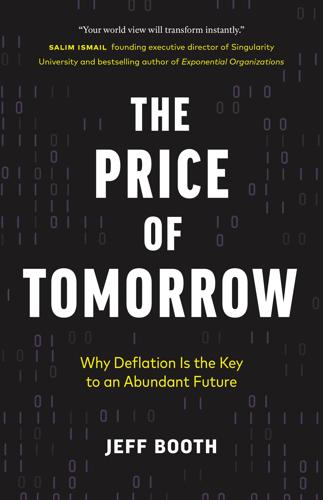
The Price of Tomorrow: Why Deflation Is the Key to an Abundant Future
by
Jeff Booth
Published 14 Jan 2020
We think that a significant advance can be made in one or more of these problems if a carefully selected group of scientists work on it together for a summer.”49 The group had some early wins that summer, including in checkers, and funding was greatly expanded around the world through the early 1970s, but the pace of innovation didn’t match the visionaries’ expectations, and funding in the US and Britain was cut off, creating the first AI winter. Although progress still continued in pockets, it was largely due to the increasing computational power of computers, combined with digitization, that artificial intelligence finally began a lasting resurgence in the late 1990s. An area of specific study for many in the artificial intelligence field was investigating how our own brains work.
…
It mastered the masters, then mastered itself, and kept on going. How does this relate to our own intelligence? Geoffrey Hinton has long been trying to understand how our brains work. Hinton, the “godfather of deep learning,” is a cognitive psychologist and computer scientist who moved to Canada because of its continued research funding through the second AI winter in the early 1990s. He currently divides his time between his work at Google and as a professor at the University of Toronto. He previously set up the Gatsby Computational Neuroscience Unit at University College London with the aim of “building neurobiologically realistic and computationally sound models of the way that the brain computes.”51 His work on multi-layer or artificial neural networks gave rise to a broader class of problems that machine learning could solve more effectively.

Coders: The Making of a New Tribe and the Remaking of the World
by
Clive Thompson
Published 26 Mar 2019
What does “falling apart” mean? This is what’s sometimes referred to as the problem of “common sense.” Our human ability to interact with the world is based on a ton of common-sense knowledge that we gradually absorb as we grow up, and in school. So the dream of a grand, self-learning AI quickly crashed. It produced an “AI winter”—a period where computer scientists and investors felt so burned by AI hype that they wouldn’t touch the field. It was too dangerous; you’d look like an idiot. Indeed, from the ’60s to the ’00s, AI went through several cycles of hype—a “summer,” when the money flooded in and people got excited about new techniques—only to overpromise and underdeliver, producing yet another winter.
…
Banks used LeCun’s work to create neural nets that could automatically read checks; some voice-recognition companies used neural nets to create the first clunky systems that could slowly, painstakingly recognize speech and type it out. But mostly, computer scientists regarded neural nets as another false promise of AI. After some small bursts of excitement in the ’80s, neural nets lapsed into their own “AI winter.” “Everyone was saying, ‘This is a lost field,’ ” Hans-Christian Boos told me; he was a young grad student fascinated by this crazy technique. But his peers told him to stay away; nothing would ever come of neural nets. They were wrong. Jeff Dean was one of the coders who discovered just how wrong they were.
…
The next-best competitor had an error rate almost twice as high, of 26.2 percent. It was an AI moon shot. Another of Dean’s colleagues was equally impressed: a Stanford professor named Andrew Ng, then a part-time consultant for Google X. Like Dean, he’d tinkered with neural code while young, then set it aside during deep learning’s long AI winter. But in 2011, over a dinner with Dean, the two got excited about the idea of using Google’s enormous phalanxes of computers to see how powerful a neural net they could build. “When people think of AI, they think of sentience,” Ng tells me. “But when I think of AI, I think of automation. That’s the value of AI.”
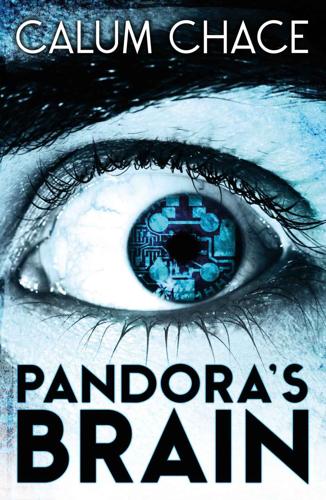
Pandora's Brain
by
Calum Chace
Published 4 Feb 2014
The first wave was largely funded by the US military, and one of its champions, Herbert Simon, claimed in 1965 that ‘machines will be capable, within twenty years, of doing any work a man can do.’ Claims like this turned out to be wildly unrealistic, and disappointment was crystallised by a damning government report in 1974. Funding was cut off, causing the first ‘AI winter’. ‘Interest was sparked again in the early 1980s, when Japan announced its ‘fifth generation’ computer research programme. ‘Expert systems’, which captured and deployed the specialised knowledge of human experts were also showing considerable promise. This second boom was extinguished in the late 1980s when the expensive, specialised computers which drove it were overtaken by smaller, general-purpose desktop machines manufactured by IBM and others.
…
As the lights came back up, Ross was standing again, poised in front of the seated guests. ‘So, Professor Montaubon. Since David and Matt’s dramatic adventure the media has been full of talk about artificial intelligence. Are we just seeing the hype again? Will we shortly be heading to into another AI winter?’ ‘I don’t think so,’ replied Montaubon, cheerfully. ‘It is almost certain that artificial intelligence will arrive much sooner than most people think. Before long we will have robots which carry out our domestic chores. And people will notice that as each year’s model becomes more eerily intelligent than the last, they are progressing towards a genuine, conscious artificial intelligence.
…
But that didn’t bother him: he was following his passion. He had been fascinated by the human brain for as long as he could remember, and developing artificial intelligence seemed the best way to understand our own intelligence. His career had begun in the early 1990s, just as interest in the field was picking up – recovering from the ‘AI winter’ brought on by the failure of the Japanese Fifth Generation programme in the 1980s. He had benefited enormously from the influx of funding, which provided superb facilities and equipment, and rapid promotion opportunities for anyone who was ambitious and pliable. Which he was. Thanks to hard work and talent, his progress up the academic ladder had been swift, and he felt his efforts had been rewarded two years ago when he was recruited by the South Korean army for a senior role in a top-secret project – developing the country’s most advanced artificial intelligence software.
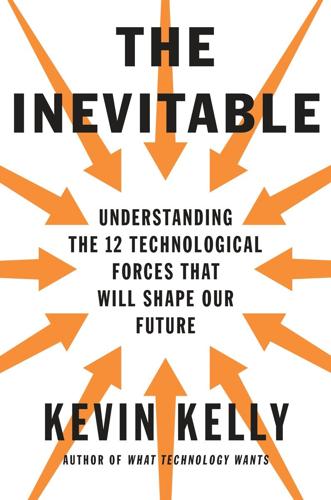
The Inevitable: Understanding the 12 Technological Forces That Will Shape Our Future
by
Kevin Kelly
Published 6 Jun 2016
Betterment or Wealthfront: Rob Berger, “7 Robo Advisors That Make Investing Effortless,” Forbes, February 5, 2015. 80 percent of its revenue: Rick Summer, “By Providing Products That Consumers Use Across the Internet, Google Can Dominate the Ad Market,” Morningstar, July 17, 2015. 3 billion queries that Google conducts: Danny Sullivan, “Google Still Doing at Least 1 Trillion Searches Per Year,” Search Engine Land, January 16, 2015. Google CEO Sundar Pichai stated: James Niccolai, “Google Reports Strong Profit, Says It’s ‘Rethinking Everything’ Around Machine Learning,” ITworld, October 22, 2015. the AI winter: “AI Winter,” Wikipedia, accessed July 24, 2015. Billions of neurons in our brain: Frederico A. C. Azevedo, Ludmila R. B. Carvalho, Lea T. Grinberg, et al., “Equal Numbers of Neuronal and Non-Neuronal Cells Make the Human Brain an Isometrically Scaled-up Primate Brain,” Journal of Comparative Neurology 513, no. 5 (2009): 532–41.
…
This is the point where it is entirely appropriate to be skeptical. For almost 60 years, AI researchers have predicted that AI is right around the corner, yet until a few years ago it seemed as stuck in the future as ever. There was even a term coined to describe this era of meager results and even more meager research funding: the AI winter. Has anything really changed? Yes. Three recent breakthroughs have unleashed the long-awaited arrival of artificial intelligence: 1. Cheap Parallel Computation Thinking is an inherently parallel process. Billions of neurons in our brain fire simultaneously to create synchronous waves of computation.

Rise of the Robots: Technology and the Threat of a Jobless Future
by
Martin Ford
Published 4 May 2015
In the decades that followed, AI research was subjected to a boom-and-bust cycle in which expectations repeatedly soared beyond any realistic technical foundation, especially given the speed of the computers available at the time. When disappointment inevitably followed, investment and research activity collapsed and long, stagnant periods that have come to be called “AI winters” ensued. Spring has once again arrived, however. The extraordinary power of today’s computers combined with advances in specific areas of AI research, as well as in our understanding of the human brain, are generating a great deal of optimism. James Barrat, the author of a recent book on the implications of advanced AI, conducted an informal survey of about two hundred researchers in human-level, rather than merely narrow, artificial intelligence.
…
A similar competitive dynamic is unfolding among nations. AI is becoming indispensable to militaries, intelligence agencies, and the surveillance apparatus in authoritarian states.* Indeed, an all-out AI arms race might well be looming in the near future. The real question, I think, is not whether the field as a whole is in any real danger of another AI winter but, rather, whether progress remains limited to narrow AI or ultimately expands to Artificial General Intelligence as well. If AI researchers do eventually manage to make the leap to AGI, there is little reason to believe that the result will be a machine that simply matches human-level intelligence.
…
See Australian Centre for Field Robotics (ACFR) adaptive learning systems, 143 Adenhart, Nick, 83 Ad Hoc Committee on the Triple Revolution, 30–31 administrative costs, higher education, 140–141 Aethon, Inc., 154 Affordable Care Act, 151, 165, 167n, 168n, 204, 279 aging populations, xvii, 220–223, 224 agriculture, ix, x–xi, 23–26 AI. See artificial intelligence (AI) “AI winters,” 231 Alaska, annual dividend, 268 algorithms acceleration in development of, 71 automated trading, 56, 113–115 increasing efficiency of, 64 machine learning, 89, 93, 100–101, 107–115, 130–131 threat to jobs, xv, 85–86 alien invasion parable, 194–196, 240 “All Can Be Lost: The Risk of Putting Our Knowledge in the Hands of Machines” (Carr), 254 all-payer ceiling, 168–169 all-payer rates, 167–169 Amazon.com, 16–17, 76, 89 artificial intelligence and, 231 cloud computing and, 104–105, 107 delivery model, 190, 190n “Mechanical Turk” service, 125n AMD (Advanced Micro Devices), 70n American Airlines, 179 American Hospital Association, 168 American Motors, 76 Andreesen, Marc, 107 Android, 6, 21, 79, 121 Apple, Inc., 17, 20, 51, 92, 106–107, 279 Apple Watch, 160 apps, difficulty in monetizing, 79 Arai, Noriko, 127–128 Aramco, 68 Ariely, Dan, 47n Arrow, Kenneth, 162, 169 art, machines creating, 111–113 Artificial General Intelligence (AGI), 231–233 dark side of, 238–241 the Singularity and, 233–238 artificial intelligence (AI), xiv arms race and, 232, 239–240 in medicine, 147–153 narrow, 229–230 offshoring and, 118–119 warnings concerning dangers of, 229 See also Artificial General Intelligence (AGI); automation; information technology Artificial Intelligence Laboratory (Stanford University), 6 artificial neural networks, 90–92.

Human Compatible: Artificial Intelligence and the Problem of Control
by
Stuart Russell
Published 7 Oct 2019
The second AI bubble burst when these systems proved to be inadequate for many of the tasks to which they were applied. Again, the machines just weren’t smart enough. An AI winter ensued. My own AI course at Berkeley, currently bursting with over nine hundred students, had just twenty-five students in 1990. The AI community learned its lesson: smarter, obviously, was better, but we would have to do our homework to make that happen. The field became far more mathematical. Connections were made to the long-established disciplines of probability, statistics, and control theory. The seeds of today’s progress were sown during that AI winter, including early work on large-scale probabilistic reasoning systems and what later became known as deep learning.
…
In the situation described, the player lands on the yellow set if any of the three totals is 16, 17, or 19. Bayesian networks provide a way to build knowledge-based systems that avoids the failures that plagued the rule-based expert systems of the 1980s. (Indeed, had the AI community been less resistant to probability in the early 1980s, it might have avoided the AI winter that followed the rule-based expert system bubble.) Thousands of applications have been fielded, in areas ranging from medical diagnosis to terrorism prevention.3 Bayesian networks provide machinery for representing the necessary probabilities and performing the calculations to implement Bayesian updating for many complex tasks.
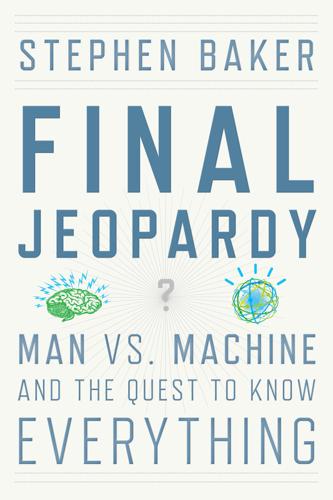
Final Jeopardy: Man vs. Machine and the Quest to Know Everything
by
Stephen Baker
Published 17 Feb 2011
In short, computer scientists would create a superendowed class of electronic servants. This led, of course, to failed promises, to such a point that Artificial Intelligence became a term of derision. Bold projects to build bionic experts and conversational computers lost their sponsors. A long AI winter ensued, lasting through much of the ’80s and ’90s. What went wrong? In retrospect, it seems almost inconceivable that leading scientists, including Nobel laureates like Simon, believed it would be so easy. They certainly appreciated the complexity of the human brain. But they also realized that a lot of that complexity was tied up in dreams, memories, guilt, regrets, faith, desires, along with the controls to maintain the physical body.
…
One person may slack his jaw in an exaggerated way, as if to say “Know what I mean?” In this tiny negotiation, far beyond the range and capabilities of machines, two people can bridge the gap between the formal definition of a word and what they really want to say. It’s hard to nail down the exact end of AI winter. A certain thaw set in when IBM’s computer Deep Blue bested Garry Kasparov in their epic 1997 showdown. Until that match, human intelligence, with its blend of historical knowledge, pattern recognition, and the ability to understand and anticipate the behavior of the person across the board, ruled the game.

Prediction Machines: The Simple Economics of Artificial Intelligence
by
Ajay Agrawal
,
Joshua Gans
and
Avi Goldfarb
Published 16 Apr 2018
Work on AI in very specific environments (for instance, one that bred an artificial therapist) failed to generalize. The early 1980s brought hope that engineers could carefully program expert systems to replicate skilled domains like medical diagnosis, but these were costly to develop, cumbersome, and could not address the myriad of exceptions and possibilities, leading to what became known as an “AI winter.” Winter, however, appears to be over. More data, better models, and enhanced computers have enabled recent developments in machine learning to improve prediction. Improvements in the collection and storage of big data have provided feedstock for new machine learning algorithms. Compared to their older statistical counterparts, and facilitated by the invention of more suitable processors, the new machine learning models are significantly more flexible and generate better predictions—so much better that some people have returned to describing this branch of computer science as “artificial intelligence.”
…
Index accounts payable, 123–124, 162 action, in decision making, 74–76 Ada Support 90–91, 174 Adobe, 190 adoption, timing of, 17 adversarial machine learning, 187–188 advertising, 174–176 biases in, 195–198 effectiveness of, 198–199 gender discrimination and, 196–198 quality of, 198–199 AI. See artificial intelligence (AI) AI canvas, 134–139 AI-first strategy, 179–182 AI Insight, 14 AI moment, 7–8 AI neuroscience, 197–198 Air France Flight 447, 192 airline industry, 168–169, 170 airline pilots, 184–185, 192 airplanes, performance of, 182–183 airport lounges, 105–106 AI winter, 32 Alabama, hybrid corn adoption in, 158–160, 181 Alexa, 1, 2–3 Alibaba, 217, 218 Alipay, 219 AliveCor, 44 Allied bombing raids, WWII, 100–102 AlphaGo, 8, 187, 222 Amazon, 215 AI asset acquisition by, 217 Alexa, 1, 2–3 anticipatory shipping strategy, 16–17, 156–157 Echo, 220 fulfillment at, 105, 143, 144–145 Machine Learning, 203 Picking Challenge, 144 privacy policy, 190 The Americans (TV show), 103 analogies, 99 anticipatory shipping, 16–17, 156–157 Apple, 189–190, 217 Apple Watch, 44–45, 46, 48–49 application ranking, 127–129 artificial intelligence (AI), 31–32.See also tools, AI automation vs., 112 biases in, 195–198 cost reductions in, 7–20 diversity in machines for, 201–202 economics of, 8–9 general, or strong, 133, 221–223 limitations of, 133 machine learning as, 38–40 as magical, 8–9 superintelligent, 221–223 trade-offs with, 4 when to deploy, 184–187 arts, 117 Asimov, Isaac, 115 Atomwise, 134–138 AT&T, 215 autocorrect, 130 automatic teller machines (ATMs), 171–173 automation AI vs., 112 fulfillment and, 105, 143–145 job loss and, 210–212 job redesign and, 141–151 legal requirements for humans with, 115–117 in mining, 112–114 when not to use, 117–118 when to use, 114–117 work flow analysis and, 123–131, 142–145 automobile industry, 169–170, 171.

Four Battlegrounds
by
Paul Scharre
Published 18 Jan 2023
Horowitz, and Lauren Kahn, “The Perils of Overhyping Artificial Intelligence: For AI to Succeed, It First Must Be Able to Fail,” Foreign Affairs, April 6, 2021, https://www.foreignaffairs.com/articles/united-states/2021-04-06/perils-overhyping-artificial-intelligence; Marc Losito and John Anderson, “The Department of Defense’s Looming AI Winter,” War on the Rocks, May 10, 2021, https://warontherocks.com/2021/05/the-department-of-defenses-looming-ai-winter/; Esper, remarks at National Security Commission on Artificial Intelligence public conference; Jackson Barnett, “Esper Announces New Initiatives to Boost U.S. Position in AI Race,” FedScoop, September 9, 2020, https://www.fedscoop.com/esper-ai-announcements-ai-race/. 206“either introduce efficiencies, or find cost savings”: Rachael Martin, interview by author, April 29, 2020. 206“Game Changer”: “The JAIC’s Business Process Transformation Mission Initiative Delivers,” Joint Artificial Intelligence Center, May 14, 2020, https://www.ai.mil/blog_05_14_20-mi_business_process_transformation_mission.html. 206“amateurs talk tactics”: “Where does the quote of ‘Amateurs talk strategy; professionals talk logistics’ come from?
…
It’s a fitting location for the Army to house their AI Task Force, a sixteen-person team tucked in a back corner of NREC’s massive building with the ambitious vision of bringing artificial intelligence into the nearly 500,000-person U.S. Army. Brigadier General Matt Easley commands the AI Task Force and has a background tailor-made for his role. Easley graduated with a PhD in computer science and studied symbolic AI before the current deep learning revolution. Easley graduated in 2000 during “the heart of an AI winter,” when “you couldn’t say the words ‘AI’,” he said. “There were no AI jobs.” But there were jobs doing AI-related things in defense. “They just changed their names,” he explained. Easley at the time was an Army reservist and worked full-time as a civilian defense contractor at Rockwell Collins building “intelligent decision aids.”
…
Surveys of several hundred AI researchers in 2016 and 2019 found aggregate forecasts of a 50 percent probability that AI systems could exceed human performance in all tasks by around 2060, but individual estimates varied widely. Any predictions should be taken with a grain of salt. It isn’t clear whether researchers can make reliable predictions about a major, disruptive shift in any technology that is decades or more in the future. AI development could peter out, the victim of another AI “winter” in which progress slows, interest wanes, and research dollars dry up. Or AI technology could continue to mature, gifting humans with ever-more powerful tools of creation, control, and destruction. 34 RESTRAINT In militarizing AI, nations are using for destructive purposes a technology that, even in its current form today, is both powerful and difficult to control.
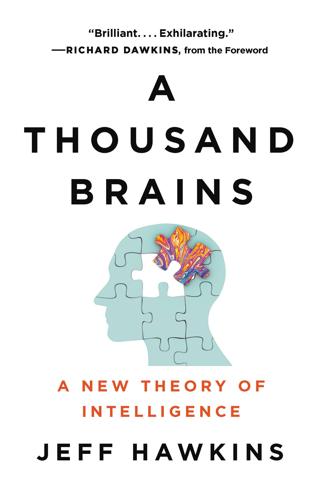
A Thousand Brains: A New Theory of Intelligence
by
Jeff Hawkins
Published 15 Nov 2021
But like the shift in personal computing to handheld devices, I see the shift of AI toward brain-based principles as inevitable. CHAPTER 8 Why There Is No “I” in AI Since its inception in 1956, the field of artificial intelligence has gone through several cycles of enthusiasm followed by pessimism. AI scientists call these “AI summers” and “AI winters.” Each wave was based on a new technology that promised to put us on the path to creating intelligent machines, but ultimately these innovations fell short. AI is currently experiencing another wave of enthusiasm, another AI summer, and, once again, expectations in the industry are high. The set of technologies driving the current surge are artificial neural networks, often referred to as deep learning.
…
The long-term goal of AI research is to create machines that exhibit human-like intelligence—machines that can rapidly learn new tasks, see analogies between different tasks, and flexibly solve new problems. This goal is called “artificial general intelligence,” or AGI, to distinguish it from today’s limited AI. The essential question today’s AI industry faces is: Are we currently on a path to creating truly intelligent AGI machines, or will we once again get stuck and enter another AI winter? The current wave of AI has attracted thousands of researchers and billions of dollars of investment. Almost all these people and dollars are being applied to improving deep learning technologies. Will this investment lead to human-level machine intelligence, or are deep learning technologies fundamentally limited, leading us once again to reinvent the field of AI?

Scary Smart: The Future of Artificial Intelligence and How You Can Save Our World
by
Mo Gawdat
Published 29 Sep 2021
The infinitesimal progress made over the next seventeen years, however, came to a halt in 1973, in what is known as the first AI winter, when the Middle Eastern oil crisis halted the funding of AI projects. In the 1980s, efforts to revive AI, mostly led by Japan, channelled investment into research, once more leading to the development of very little real intelligence (as compared to the hype and excitement surrounding it) until it was all halted again in 1987 – again, due to an economic crisis. This is known as the second AI winter. Sporadic attempts at AI followed the economic recovery, but it wasn’t until the turn of the millennium, when we stumbled upon the biggest breakthrough in the history of AI, that we started to make real progress.

Physics of the Future: How Science Will Shape Human Destiny and Our Daily Lives by the Year 2100
by
Michio Kaku
Published 15 Mar 2011
These early robots were like a one-trick pony, performing just one simple task. In fact, in the 1950s, real breakthroughs were made in AI, but because the progress was vastly overstated and overhyped, a backlash set in. In 1974, under a chorus of rising criticism, the U.S. and British governments cut off funding. The first AI winter set in. Today, AI researcher Paul Abrahams shakes his head when he looks back at those heady times in the 1950s when he was a graduate student at MIT and anything seemed possible. He recalled, “It’s as though a group of people had proposed to build a tower to the moon. Each year they point with pride at how much higher the tower is than it was the previous year.
…
Unfortunately, the only thing that the smart truck did was get lost. And the Fifth Generation Project, after much fanfare, was quietly dropped without explanation. Once again, the rhetoric far outpaced the reality. In fact, there were real gains made in AI in the 1980s, but because progress was again overhyped, a second backlash set in, creating the second AI winter, in which funding again dried up and disillusioned people left the field in droves. It became painfully clear that something was missing. In 1992 AI researchers had mixed feelings holding a special celebration in honor of the movie 2001, in which a computer called HAL 9000 runs amok and slaughters the crew of a spaceship.
…
But with Moore’s law spewing out new generations of computers every eighteen months, sooner or later the old pessimism of the past generation will be gradually forgotten and a new generation of bright enthusiasts will take over, creating renewed optimism and energy in the once-dormant field. Thirty years after the last AI winter set in, computers have advanced enough so that the new generation of AI researchers are again making hopeful predictions about the future. The time has finally come for AI, say its supporters. This time, it’s for real. The third try is the lucky charm. But if they are right, are humans soon to be obsolete?
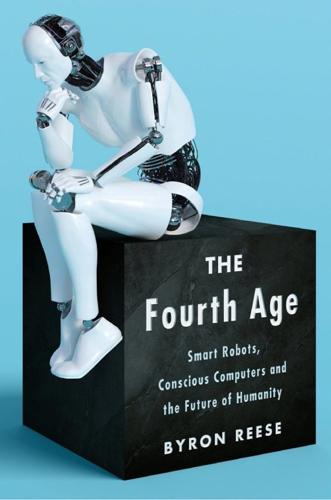
The Fourth Age: Smart Robots, Conscious Computers, and the Future of Humanity
by
Byron Reese
Published 23 Apr 2018
This has been a long time coming, for progress in AI has slowed to a crawl several times throughout the last few decades as investment in the technology dried up due to disappointment over its slow development. These periods of drought were known as “AI winters,” and they lasted until some new technology or technique rekindled enthusiasm for AI, starting the cycle over again. AI has now proved itself in so many areas that it is unlikely that we will have another AI winter. This surge of progress has led the CEO of IBM, Ginni Rometty, to predict that by 2021 “cognitive AI will impact every decision made.” So how does AI work? Very broadly speaking, there are three different approaches to how to build AI.
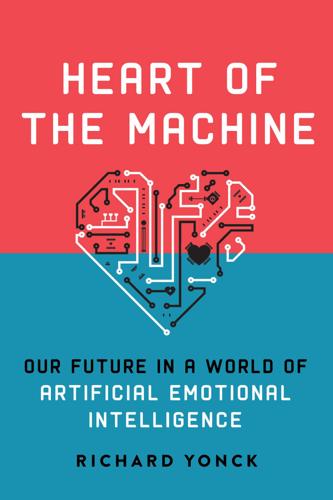
Heart of the Machine: Our Future in a World of Artificial Emotional Intelligence
by
Richard Yonck
Published 7 Mar 2017
The late 1950s saw some of the first applied efforts with the writing of the first AI programs: Logic Theorist in 1956 and General Problem Solver in 1957, as well as the development of the AI programming language LISP in 1958. But while advances were made during this heyday, there were also many failures. Finally, in the early 1970s, frustrated with the lack of progress and under political pressure, much government funding was cut off, both in the United States and in Britain. This would become known as the first “AI winter,” a colloquialism that was used to denote those periods of political and corporate disillusionment that led to significant reductions in funding for AI projects. Subsequent periods of boom and bust would plague the field of AI research, but in many ways this was necessary. Just as environmental conditions create pressures in nature that contribute to the natural selection processes of evolution, so too do economic and societal realities contribute to the evolution of technology.
…
See Access-consciousness AARP (2010 study), 153 Abigail, 3–4, 161–162 Access-consciousness, 242–249, 270 ACLU, 145 adaptive learning technology, 117–118 addictive behaviors and digitized emotion, 220 adrenaline, 186, 221 Affdex, 66, 69 affect, 47 Affect in Speech, 57 Affectiva, 66, 68–72, 118, 275 Affective Computing Company (tACC), 72 Affective Computing (Picard), 47–48, 51 Affective Computing Research Group, Media Lab, 52–54, 57, 60 AI and social experiments, 195–198 AI Watson, 197 “AI winter,” 37–38 AIBO, 200 “AI-human symbiote,” 264 Air Force Research Lab, Wright-Patterson AFB, OH, 128–129 Aldebaran, 82, 112–113, 152 alexithymia, 34 Alone Together (Turkle), 199 AlphaGo, 68, 233 Alzheimer’s disease, 205 AM (deranged supercomputer), 232 American Psychiatric Association’s Diagnostic and Statistical Manual of Mental Disorders (DSM-5), 187 Amin, Wael, 59 amygdala, 19, 34, 221 anterior cingulate cortex (ACC), 19–20, 34, 247 anthropomorphism, 80–81 Apollo Program, 272 Apple, 75 application programming interfaces (APIs), 65, 72 Ardipethicus ramidus, 14 artificial intelligence, 52–53 development of, 35–36 foundations of, 36 term coined, 37 artificial neural networks (ANNs), 66, 251 artificially generated emotions, 102.

Practical Doomsday: A User's Guide to the End of the World
by
Michal Zalewski
Published 11 Jan 2022
Rather than speculate about the consequences, then, perhaps a better question is how far we are from developing this kind of AGI. On this topic, the history of AI research offers a cautionary tale: after the initial exuberance and some stunning early successes of artificial neural networks in the 1950s and 1960s, the field slid into a prolonged “AI winter” of broken promises and constant disappointments. Funding dwindled, and few academics would take pride in associating themselves with the discipline. It wasn’t until the late 2000s that AI research made a comeback, aided with vastly superior computing resources and significant refinements to the architecture of neural networks and to deep learning algorithms.
…
Numbers 2FA (two-factor authentication), 108 3M gasmaks, 177 3M respirators, 175 9-11 attacks, 26–27 9mm Luger, 214 28 Days Later, 32 .38 Special, 214 A Abine, 110 accidental injuries car accidents, 96–98 firearms, 196, 217–218 industrial accidents, 19–20, 177 statistics on, 12–13 action plan, 121–125 Acxiom, 110 addiction, 99–100 adverse judgments, 69–70 advertising industry, 110 AGI (artificial general intelligence), 42 AI winter, 42 AIDS, 32 alarm systems, 112 alcohol use, 100–101 Alinco, 188 alkaline batteries, 154–155 allergies, 150 aluminum zirconium tetrachlorohydrex gly, 149 amateur radio, 188–189 ammunition, 217 amoxicillin, 151 anesthetics miconazole nitrate, 150 animal-borne diseases, 176 antibiotics, 151 antifungal cream, 150 anti-itch cream, 150 antiperspirant, 149 antivirus programs, 106 Anytime Mailbox, 111 apocalypse, predictions of, 30–31 appliances, 152–159 APRS (Automatic Packet Reporting System), 188–189 Aquatabs, 134 Aqua-Tainer products, 133 AR-15, 215–216 Arm & Hammer, 149 Armero volcano eruption, 35 artificial intelligence, 31, 42 asteroids, 34 asthma, 150 atom bombs, 30–31, 39–40, 178–180 Augason Farms, 141 auto accidents, 96–98 auto insurance, 51–52 auto repairs, 163–164 automated billing, 51 automatic center punches, 164 Automatic Packet Reporting System (APRS), 188–189 avian flu, 26 B backyard gardens, 144 bail-ins, 22 bailouts, 68–69 baking soda, 148 ballistic vests, 129–130 bank accounts, 68–69, 76–77 banking crises, 22, 68–69 Bankrate.com, 10 Banqiao dam failure, 20 BaoFeng, 188 Barbot, Oxiris, 25 barter, 58–59, 73–74 batteries, 154–155, 163 bear spray, 171 BeenVerified, 110 Beirut nitrate explosion, 20 benzalkonium chloride (BZK) wipes, 149 benzocaine ointments, 151 The Bet (Sabin), 8 Bhopal disaster, 20 bicycles, 166 billionaires, 73 bird shot, 217 birth certificates, 166–167 Bitcoin, 66–68 Black Death, 32, 176 black holes, 35 bleeding, 151, 177 blizzards, 18 blockchain, 67 blunt instruments, 208 Bogle, John C., 80–81 bonds, 77–78 books, 191–192 bows, 208–209 brain in a jar, 42 break-ins, 111–112, 201 bromadiolone, 177 bromethalin, 177 Brooks, Max, 30 buckshot, 217 bug-out situations, 165–171 bulletproof vests, 129–130 bullets, 217 Bureau of Justice Statistics, 13 burglaries, 13, 111–112, 201 Butte fire complex, 18 BZK (benzalkonium chloride) wipes, 149 C caffeine pills, 150 California Consumer Privacy Act (CCPA), 111 California Gun Laws (Michel and Cubeiro), 196 calorie needs, 138–139 calorie restriction, 117–118 cameras, 201 camping, 167–168, 171 Canberra MRAD113, 179 candles, 154 Capital in the Twenty-First Century (Piketty), 72 car accidents, 96–98 car break-ins, 111 car insurance, 51–52 car repairs, 163–164 career planning, 91–93 cash, 49–55, 75–76 Cato Institute, 23 CB (citizens band) radios, 186 CCPA (California Consumer Privacy Act), 111 CDC (Centers for Disease Control and Prevention), 13 cell phones, 155–156, 181 cetirizine, 150 chains, 163 chainsaws, 162 Champion generators, 156 Charlie’s Soap, 149 Chernobyl Nuclear Power Plant, 20, 31 Chicago Sunday Tribune, 37–38 chlorination, 134 choking, 104 cholecalciferol, 177 Christmas Island, 33 citizens band (CB) radios, 186 class tensions, 72–73 clathrate gun hypothesis, 33 cleaning, 148 climate change, 18, 33–34 clip-on pulse oximeters, 150 CME (coronal mass ejection), 35–36 cocaine, 100 coincidence of wants, 58 coins, 59–63 collectibles, 86–87, 201 Colorado floods, 11 come-alongs, 162–163 commodity futures options, 71, 81–83 commodity money, 60 communications, 181–190 community property, 125 compensation, 50 confiscatory taxes, 72–73 constitutional carry, 206 consumer debt, 53–54 consumer lending, 63 consumer prices, 70–71 contraceptives, 150 convictions, 6–8 cooking, 158 CoreLogic, 110 coronal mass ejection (CME), 35–36 cosmic threats, 35–36 cost of living, 11 cough, 150 court fights, 69–70 coveralls, 175 COVID-19 pandemic, 25–26, 174–176 CPR procedure, 151–152 credit cards, 53–54 Cretaceous–Paleogene extinction, 34 criminal victimization, 13 crisis indicators, 124 critical decision points, 124 crony beliefs, 6–8 crossbows, 208–209 cryptocurrencies, 66–68, 84, 87 Cubeiro, Matthew D., 196 currencies, history of, 58–68 customer data, 110 cuts, 150 Cypriot debt crisis, 69, 73 D data brokers, 110 Datrex, 143 d-CON, 177 DDT (dichlorodiphenyltrichloroethane), 176 De Waal, Frans, 20 death causes of, 13 planning, 14–15, 124–125 debt, 10–11, 50, 53–54, 59–60 debt crisis, 22 Debt: The First 5000 Years (Graeber), 59 de-escalation skills, 13 defensive driving, 96–98 dehydration, 134 DeleteMe Help Center, 110 deltamethrin, 176 dental care, 151 dental picks, 151 developing countries, 33–34 dextromethorphan, 150 diarrhea, 150 dichlorodiphenyltrichloroethane (DDT), 176 Didion, Joan, 122 dietary supplements, 180 diets, 115–118 digital communications, 188–189 Digital Mobile Radio (DMR), 188 diindolylmethane (DIM), 179 dinosaurs, 34 diseases, 32–33, 173–177 dishwashing, 148 Diversey Oxivir Five 16, 176 Diversey PERdiem, 148 diversified portfolios, 88–-90 divorce, 69–70 documents, 166–167 Dogecoin, 68 dogs as burglary deterrent, 112 domestic terrorism, 26–27 driving habits, 96–98 drowning, 104 drugs, 99–101, 150 D-STAR, 188 “duck and cover,” 39 DuPont Tychem coveralls, 175 dust storms, 18 duty to retreat, 205 Dynarex, 149 E earthquake probabilities, 19 Ebola, 26, 32 economic crises, 22–24 economic hardships, 10–11 economic persecution, 72 ecosystem collapse, 34 Ehrlich, Paul R., 7–8, 30 elastic bandages, 150 electricity, 36, 152–159 electrolyte imbalance, 150 emergency ration bars, 143 emergency repairs, 162–163 EMP (electromagnetic pulse), 40–41 employment, 91–93 encephalitis lethargica, 25 Energizer Ultimate batteries, 155 entertainment, 191–192 epinephrine inhalers, 150 Epsilon Data Management, 110 Equifax, 110 equities, 79–81 escheatment, 77 eugenics, 37 eugenol, 151 evacuation, 165–171 exercise, 117–118 expenses, 51–52 Experian, 110 Expose, 176 extinction, 34 extraterrestrial life, 43 extreme weather, 18, 156–158, 168 F Facebook, 109, 110, 155 fall injuries, 98–99 false vacuum decay, 35 Family Radio Service (FRS), 186–187 farming, 137 Federal Emergency Management Agency (FEMA), 19, 132 fever, 150 fiat money, 64–65 fiction, 29–30 fighting, 113, 206 financial problems, 10–11 firearms, 196–197, 211–219 fires Butte fire complex, 18 house fires, 11, 18, 103–104 wildfires, 18, 44, 124 firewood, 158, 170 first aid, 149–152 fitness, 115–118 fixed-blade knives, 170 flashlights, 154–155 flat tires, 163 floods, 19, 147–148 floss, 151 flu, 25 fluticasone propionate, 150 FMJ (full metal jacket) bullets, 217 food-borne illness, 141–142 food preparation, 158 food security, 137–144 foraging, 168–169 foreclosures, 10–11 foreign currencies, 78–79 Forgey, William W., 152 Forster, E.
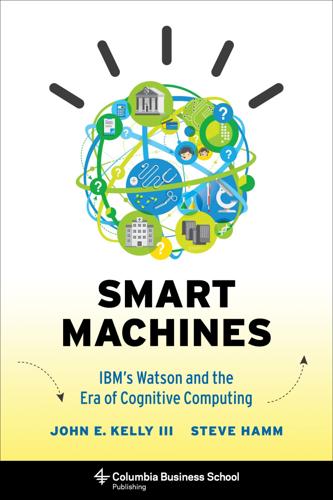
Smart Machines: IBM's Watson and the Era of Cognitive Computing (Columbia Business School Publishing)
by
John E. Kelly Iii
Published 23 Sep 2013
He’s now focusing on giving machines the ability to perform humanlike commonsense reasoning.6 Today, Andrew Ng of Stanford is leading a team of scientists in an attempt to create algorithms that can learn based on principles that the brain might also employ. The field of artificial intelligence has advanced in starts and stops. Periods of soaring optimism have been followed by so-called AI winters, when seemingly promising avenues of research failed to produce the anticipated results. Put simply, this is hard stuff. So it’s no surprise that when Charles Lickel proposed Jeopardy! as the next grand challenge, his suggestion was met initially with reactions ranging from skepticism to outright derision.
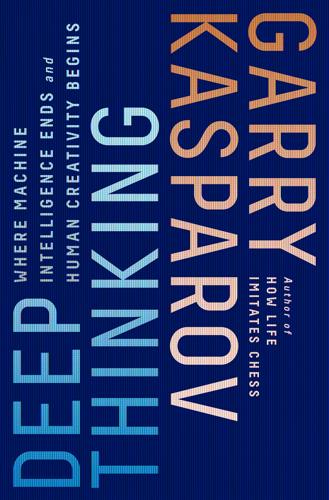
Deep Thinking: Where Machine Intelligence Ends and Human Creativity Begins
by
Garry Kasparov
Published 1 May 2017
Machines would become an exciting part of this new era. Right around when Deep Thought became the first chess machine to become a real threat to Grandmasters at the end of the 1980s, artificial intelligence was experiencing a broad resurgence in the scientific and business worlds. The so-called AI winter that had descended after years of overpromising and subsequent disillusionment was lifting. The crisis for AI stemmed from the evaporation of the confidence so many experts in the 1970s had had in quickly discovering the secrets of cognition. Research projects and commercial AI ventures were shuttered throughout the 1980s and the AI movement had splintered.
…
A robot must obey the orders given it by human beings except where such orders would conflict with the First Law. A robot must protect its own existence as long as such protection does not conflict with the First or Second Laws.” Isaac Asimov, I, Robot (New York: Gnome Press, 1950). INDEX Adams, Douglas, 69, 70 Advanced Chess, 244–246 AI (artificial intelligence) AI winter/end, 95 ARPA/DARPA and, 96–99 attitudes towards, 9, 71, 255, 256–258 chess as Drosophila of, 74, 230, 234 context and, 75–77, 101–102 costs/limited resources and, 252, 253 descriptions/examples, 51, 75, 77 evolution, 51, 95–96 future and, 249–259 glitches/problems, 102–103 humans losing control (“the singularity”), 255, 256–258 language and, 99–100, 101, 102 movies and, 100–101, 255 optimism/expectations, 95–96, 99 origins and, 96–99 profits and, 103–104 questions and, 69–71, 72 “term” origins, 74 Turing’s idea of, 75 See also chess machines; computers; specific machines; technology/automation “AI effect,” 251–252 AI Magazine, 90 Alekhine, Alexander, 156 Aleksander, Igor, 222 “analyzing to the result,” 172–173 Anand, Viswanathan, 12, 47, 124, 131, 149, 171, 182, 235–238 anchoring effect, 242–244 anti-computer movement, 231 Apollo program, 36 ARPANET/Internet origins, 96–99 Ariely, Dan, 240 Aristotle, 27–28, 225 ARPA (Advanced Research Projects Agency) becoming/as DARPA, 97–99 Internet/World Wide Web origins and, 96–99 Ashley, Maurice, 165, 174, 189, 196, 198, 212 Asimov, Isaac, 249–250, 257 Atkin, Larry, 66 Atlantic, 103 Awonder Liang, 84 Babbage, Charles, 27, 152 Ban, Amir, 127 Behind Deep Blue (Hsu), 209 Belle, 38, 39, 63–64, 74, 89, 108, 133, 151, 153 Benjamin, Joel, 133, 136, 142, 143, 147, 160, 163, 189, 196, 219 Berliner, Hans, 39, 90–91, 98 Binet, Alfred, 74, 82 Blaine, David, 170–171 Bogart, Humphrey, 16 Bolt, Usain, 47 Bonaparte, Napoleon, 4, 11 Bostrom, Nick, 252, 256, 258 Botvinnik, Mikhail, 5, 20, 23, 52, 137, 156–158, 159, 175, 244 brain/human cognition understanding, 27–28 brain plasticity, 153 brain scans of chess players/results, 13–14 Breaking Dawn (movie), 16 Bronson, Charles, 218 Bronstein, David, 52, 54, 156 Brooks, David, 224 Browne, Walter, 206, 232 Brynjolfsson, Erik, 134 Bulletin of the Atomic Scientists, 45 Bushinsky, Shay, 127, 208, 209 Byrne, Robert, 175, 203 BYTE magazine, 56 Cameron, James, 255 Campbell, Murray, 39 Campbell, Murray after Deep Blue, 219 Deep Thought/Deep Blue and, 39, 64, 109, 115, 125, 139, 142, 143, 158, 160, 167, 175–176, 178, 179, 196, 210, 219 Carlsen, Magnus, 50, 66, 232, 233 Caxton, William, 11 chaturanga, 11 checkers machines, 73 chess age of GMs, 231–232 analysis of games, 136–138, 139 benefits for adults, 153 benefits for children, 152–153 cheaters and, 4 computer effects and, 50 democratizing, 49 descriptions, 17–18 drawing of lots, 170–171 draws/draw offer and, 145–147 as Drosophila of AI, 74, 230, 234 feuds/disputes and, 197–198 flattery of, 15–16 forced moves, 31 Internet effects, 61–62 joke, 186–187 movies and, 16–17 opening books importance (summary), 105–107 opening novelties, 62, 105–106, 181–182, 183, 198, 227–228, 237, 238 origins/evolution, 11–13 phases of game, 13–14 popularity, 8–9, 12, 19 ranking/rating players, 50, 66 rematches/overconfidence and, 157–158 rematches/rematch clause, 156–158 replying instantly vs. pausing, 182–183 “sharp positions” and, 144, 145 simultaneous blindfold play, 15–16 sports/comparisons and, 79–81 status of, 11 stereotype in West, 19 terminology, 66, 114 terminology for fast games, 114 chess machines “AI effect” and, 251–252 creators/programmers attitudes, 90–92 descriptions, 2, 48, 53, 81–82, 110, 111, 115, 116 future and, 73 glitches, 111 goal setting and, 121 “horizon effect” and, 87, 88 human/machine differences, 166, 168, 169, 177, 182–184, 186, 203–204, 210 human/machine partnerships and, 3, 235–238, 242–247 material value and, 37, 52–53, 72, 175 opening books (summary), 105, 106–107 “personalities,” 107 programmers style and, 126–127 public perception/change and, 93 speed and, 53–54, 116 sport vs. science, 108 tablebases and, 204–208 See also specific machines chess machines evolution alpha-beta search algorithm and, 38, 74, 99 chess selection reasons, 27, 28–30, 74, 99 descriptions/improvements, 3–5, 25–39, 54–56, 65–67, 74, 106–108 forecasts and, 36, 63–64 minimax algorithm and, 29–30, 38 Monte Carlo tree search, 121 move selection and, 29–33 “null move” technique, 120–121 number of possible moves and, 34, 35 programming improvements and, 37, 38 speed and, 36–37, 38, 53–54 times for moves and, 33–34, 35 Type A/Type B search techniques, 30–31, 33–35, 54–55, 63–64, 65 chess machines/humans playing anti-computer strategy, 66, 86, 88, 231 crashes/programmed crashes and effects, 208–209 energy use differences, 166 first game (with GM), 51–52 human adaptations and, 143, 144, 147, 148 human/machine differences, 86–87, 120–122, 143, 144, 147, 148, 166, 172, 208 human mind and, 120–122, 148, 172 human reactions and, 91–92 human strategies (summary), 86–92, 120–122 humans/children learning, 226–228, 230–234 learning, 230–234 technical problems/distractions and ethics, 130, 135, 142, 144–145, 169, 176, 177, 187–188, 198–200, 208–210 Turk machine (hoax), 3–4, 181, 199 See also specific individuals; specific machines chess machines/Kasparov attitude towards, 1, 5–7, 47, 124–125 Chess Genius (1994/1995), 123–124, 126 Deep Junior, 37, 67, 207, 254 Deep Thought and, 104, 107–112, 114, 115–116, 132, 139–140, 154, 162 Fritz, 122–123, 126, 127–128, 142 Hamburg “simuls” (1985), 1–2 preparation and, 127 summaries, 23, 37, 86 timing and, 63, 86 See also Deep Blue/Kasparov chess players control and, 17–18 defeat/recovery and, 80 “genius” label and, 14–15 geographic diversity of elite players, 233–234 innate talent/practice and, 49, 74, 82–85 negative stereotypes and, 17, 18–19, 21–22 “positional play,” 88–89 producing elite talent and, 49, 231–234 psychology and, 80–82, 86–87 See also specific individuals ChessBase, 48–49, 59, 62, 116, 131, 174, 178–179, 180 Clarke, Arthur C., 17, 18 Common Sense in Chess (Lasker), 81 computers analysis of human behavior and, 116 capabilities (PCs/early 1990s), 119 chess and, 119, 126, 153 chess preparation and, 59–60 Hopper game, 57–58 joke about, 69 predictions on, 25 “Turing test” and, 4, 18, 115–116 See also AI (artificial intelligence); chess machines; specific individuals Computers, Chess, and Cognition, 74 Condon, Joe, 63, 89 corporation ethics, 200 Cramton, Steven, 246 creativity/innovation Bell Labs and, 151 Belle machine and, 153 brain plasticity and, 153 diverse activities and, 153 education and, 234–235 “human plus machine” and, 228–235 imitation vs., 229–230 optimization and, 151–152 See also specific innovations Crook, Nigel/Artie (robot), 71 Cybernetics (Wiener), 29 DARPA (Defense Advanced Research Projects Agency), 97–99 de Groot, Adriaan, 74, 82 decision making anchoring effect, 240–242 chess and, 242–247 emotional state and, 238–239 “human plus machine” overview, 235–248 intuition and, 239–242 Deep Blue in 1990s, 37 Belle and, 151 computer chess programs vs.

A World Without Work: Technology, Automation, and How We Should Respond
by
Daniel Susskind
Published 14 Jan 2020
Despite all the efforts, machines could not beat a top player at chess. They could not translate more than a handful of sentences or identify anything but the simplest objects. And the story was the same for a great many other tasks, too. As progress faltered, researchers found themselves at a dead end. The late 1980s became known as the “AI winter”: funding dried up, research slowed, and interest in the field fell away. The first wave of AI, that had raised so many hopes, ended in failure. THE SECOND WAVE OF AI Things started looking up again for AI in 1997. That’s when a system called Deep Blue, owned by IBM, beat Garry Kasparov, then the world chess champion.
…
In 2017, Tesla’s CEO Elon Musk expressed his hope that car production in the future will be so highly automated that “air friction” faced by robots would be a significant limiting factor.72 Just a few months later, under pressure as Tesla failed to meet production targets, he sheepishly tweeted, “yes, excessive automation at Tesla was a mistake.”73 However, to dwell for too long on any particular omission or exaggeration is to miss the bigger picture: machines are gradually encroaching on more and more tasks that, in the past, had required a rich range of human capabilities. Of course, this has not been a perfectly steady process. Over the years task encroachment has fallen into fallow periods when new obstacles were encountered, surged forward when limits to automation were overcome. Such ebb and flow will surely happen in the future as well. Perhaps new AI winters lie ahead, as today’s more feverish enthusiasms about new technologies collide with their actual limitations. But like past limits, many of these will fall away as fresh solutions and work-arounds are fashioned. Economists are wary of labeling any empirical regularity a “rule” or a “law,” but task encroachment has proven as law-like as any historical phenomenon can be.

System Error: Where Big Tech Went Wrong and How We Can Reboot
by
Rob Reich
,
Mehran Sahami
and
Jeremy M. Weinstein
Published 6 Sep 2021
This example of an amputee dog may not look like a significant problem, but if inadequate rules-based systems are used in critical situations, such as controlling a blast furnace in a steel mill, problems in reasoning have the potential for much more significant consequences. The overhype and underperformance of AI systems led to a decades-long “AI winter” in the 1970s and ’80s. Industrial use of AI was significantly curtailed, and academic funding dried up. Toward the end of that period, more modern AI systems overcame the brittleness of rules-based systems with the development of more flexible and often complicated systems. These included the advent of neural networks, algorithms for machine learning that took inspiration from models of the human brain as a way to deal with uncertainty in the world.
…
See also big tech platforms Andreessen, Marc, 30, 42 Andreessen Horowitz, 42, 45 anonymizing and de-anonymizing, 130–31 antitrust, 45, 48–49, 55, 57, 63–64, 136, 215, 227–28, 241, 253, 257 Apple Cook appears before House committee, 64–65 differential privacy technology, 131–32 Microsoft’s bail out of, 257 partnership with Google, 113 privacy by design, 134–35, 149 See also big tech platforms Aristotle, 66, 67, 172–73 artificial general intelligence (AGI), 159–60, 234 artificial intelligence (AI) AI arms race between China and the US, 241 customer support, 163 development and capability, 160–65, 181–82 history of successes, 20, 84, 156 physical labor capability vs. digital automation, 158 robotic bartenders, 163 skills training for workers replaced by, 184 UBI for workers paid for with tax on AI machines, 182–84 weak vs. strong, 159–60 AI winter, 161 See also algorithmic decision-making, automation Association for Computing Machinery (ACM), xxxi, 247 Athey, Susan, 137–38 AT&T’s long-distance system, 57–58 auditability of algorithmic decisions, 106–7 autocracy, 71 automation and humans, 165–66, 169, 171, 175, 176, 177–78 automation bias, 102 autonomous vehicles.
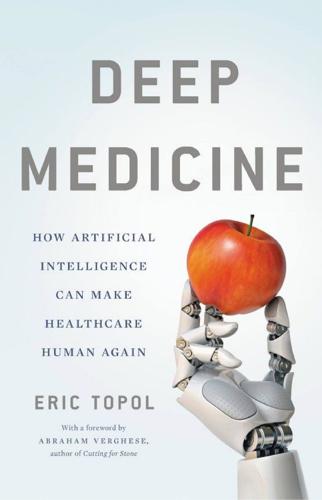
Deep Medicine: How Artificial Intelligence Can Make Healthcare Human Again
by
Eric Topol
Published 1 Jan 2019
Those technologies, despite their prominence today, were not the heart of AI for the first decades of its existence. The field barreled along on the basis of logic-based expert systems, when pessimism took hold among computer scientists, who recognized that the tools weren’t working. That souring, along with a serious reduction of research output and grant support, led to the “AI winter,” as it became known, which lasted about twenty years. It started to come out of hibernation when the term “deep learning” was coined by Rina Dechter in 1986 and later popularized by Geoffrey Hinton, Yann LeCun and Yoshua Bengio. By the late 1980s, multilayered or deep neural networks (DNN) were gaining considerable interest, and the field came back to life.
…
—YANN LECUN I often tell my students not to be misled by the name “artificial intelligence”—there is nothing artificial about it. AI is made by humans, intended to behave by humans, and, ultimately, to impact human lives and human society. —FEI-FEI LI WHEN I VISITED FEI-FEI LI AT GOOGLE NEAR THE END OF 2017, with AI hype seemingly near its peak, she suggested that we may need another AI winter to get things to cool off, to do reality testing, and to “bubble wrap” the progress that has been made. There’s no question that we’ve seen hyperbole across the board, with forecasts of imminent doom, massive job loss, and replacement of doctors, just to name a few. But when I thought about and researched all the negative issues related to AI, I realized that I could write a whole book on this topic.

Machine, Platform, Crowd: Harnessing Our Digital Future
by
Andrew McAfee
and
Erik Brynjolfsson
Published 26 Jun 2017
According to a 1979 collection of anecdotes, for example, researchers gave their English-to-Russian translation utility the phrase “The spirit is willing, but the flesh is weak.” The program responded with the Russian equivalent of “The whisky is agreeable, but the meat has gone bad.” This story is probably apocryphal, but it’s not an exaggeration. As a group, symbolic AI systems generated deeply underwhelming results, so much so that by the late 1980s, an “AI winter” had descended over the field as major corporate and governmental sources of research funding dried up. Over-ruled What explains the broad failure of symbolic approaches to AI? There are two main obstacles. One poses serious challenges for the field, and the other is apparently insurmountable.
…
They showed mathematically that Rosenblatt’s design was incapable of accomplishing some basic classification tasks. For most in the field of artificial intelligence, this was enough to get them to turn away not only from Perceptrons, but from the broader concepts of neural networks and machine learning in general. The AI winter descended on both camps of researchers. Persistence with Perceptrons Pays Off A few teams carried on with machine learning because they remained convinced that the right way to get computers to think in humanlike ways was to build brain-inspired neural networks that could learn by example. These researchers came to understand and overcome the limitations of the Perceptron.

The Man From the Future: The Visionary Life of John Von Neumann
by
Ananyo Bhattacharya
Published 6 Oct 2021
As von Neumann was writing his Silliman lectures, psychologist Frank Rosenblatt was improving on the McCulloch-Pitts artificial neuron by making one that was capable of learning. Initial high hopes for this ‘perceptron’ faded; in 1969, Minsky and Seymour Papert published a damning book assessing the computational limitations of simple networks of artificial neurons. Funding dried up in the 1970s – the first ‘AI winter’ – and then renewed optimism in the 1980s gave way to a second AI winter, triggered in part by researchers who argued that progress required feedback from the senses (cameras and microphones) and interactions with the real world (through pressure or temperature sensors, for example). Despite the criticisms, in recent years, artificial intelligence algorithms have started to achieve staggering feats – from beating world champion board-game players to teaching themselves how to program – and these algorithms are often run on neural networks composed of artificial neurons not so different from Rosenblatt’s perceptrons.

More Everything Forever: AI Overlords, Space Empires, and Silicon Valley's Crusade to Control the Fate of Humanity
by
Adam Becker
Published 14 Jun 2025
There have been AI booms—like the one that exploded into public consciousness in 2022, powered by large language models (LLMs)—and, to date, they have all been followed by “AI winters,” when progress slows and the state of the art stagnates for years or decades until the next breakthrough. And Brooks thinks winter is coming. “[LLMs] are following a well worn hype cycle that we have seen again, and again, during the 60+ year history of AI,” he wrote in 2024. “Get your thick coats now. There may be yet another AI winter, and perhaps even a full scale tech winter, just around the corner. And it is going to be cold.”106 All of this uncertainty reflects the fact that we just don’t know what it will take to build a machine that can do all the things a human can do.
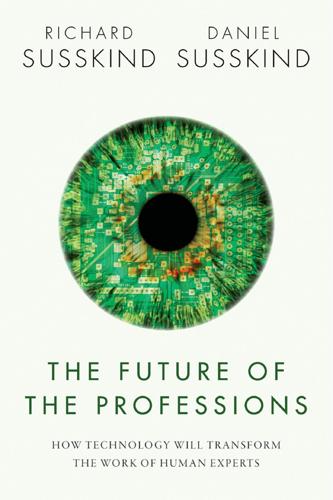
The Future of the Professions: How Technology Will Transform the Work of Human Experts
by
Richard Susskind
and
Daniel Susskind
Published 24 Aug 2015
Here again, we were heavily involved in the development of systems that could undertake expert tasks at a high level.106 At the same time, we also kept close to parallel advances in medicine where substantial progress was being made. These early successes generated much excitement. Then came what is often referred to as the ‘AI winter’, the period during which AI seemed to stall. In the professions, certainly, thirty years on, there are far fewer operational expert systems of the sort we developed than we had expected. What went wrong? Why have so few expert systems in law, tax, and audit emerged since then? Why was this great early promise not fulfilled?
…
These systems will provide high-quality advice and guidance, but not by reasoning or working in the same way as skilled specialists; nor by seeking to model human thoughts and reasoning processes; nor again by having common sense or general knowledge. These systems are high-performing but are not intelligent in the way that human beings are (we expand on this in section 7.1). On this view, we need to reappraise AI. For many commentators, the AI winter was a euphemism for AI’s demise. But it transpires that AI has not been expiring. It has instead been hibernating, conserving its energy, as it were, ticking over quietly in the background, waiting for enabling technologies to emerge and catch up with some of the original aspirations of the early AI scientists.

The Age of AI: And Our Human Future
by
Henry A Kissinger
,
Eric Schmidt
and
Daniel Huttenlocher
Published 2 Nov 2021
In practice, the approach of formulating abstract models and then attempting to match them with highly variable inputs thereby proved virtually unworkable. Because these formalistic and inflexible systems were only successful in domains whose tasks could be achieved by encoding clear rules, from the late 1980s through the 1990s, the field entered a period referred to as “AI winter.” Applied to more dynamic tasks, AI proved to be brittle, yielding results that failed the Turing test—in other words, that did not achieve or mimic human performance. Because the applications of such systems were limited, R&D funding declined, and progress slowed. Then, in the 1990s, a breakthrough occurred.

Co-Intelligence: Living and Working With AI
by
Ethan Mollick
Published 2 Apr 2024
Progress was initially rapid as computers were programmed to solve logic problems and play checkers—leading researchers expected an AI to beat grandmasters in chess within a decade. But hype cycles have always plagued AI, and as these promises went unfulfilled, disillusionment set in, one of many “AI winters” in which AI progress stalls and funding dries up. Other boom-and-bust cycles followed, each boom accompanied by major technological advances, such as artificial neural networks that mimicked the human brain, followed by collapse as AI could not deliver on expected goals. The latest AI boom started in the 2010s with the promise of using machine learning techniques for data analysis and prediction.

Blockchain Chicken Farm: And Other Stories of Tech in China's Countryside
by
Xiaowei Wang
Published 12 Oct 2020
This hybrid machine was able to perform broader tasks without further training data; however, it was still not fully sentient. Scientists believe further development is needed to better understand what other parts of the body creative and language functions reside in. Yet the ability of the machine to extend its thinking was the first breakthrough in a long, icy AI winter. The system did not have access to typical conduits for qi (the defining force in Chinese medicine), such as hair, skin, or muscle, to send to the machine-meat hybrid. In order to nourish this system of organs and neural networks, it had to be constantly fed tonifying food: foods to nourish the vital organs in the system.
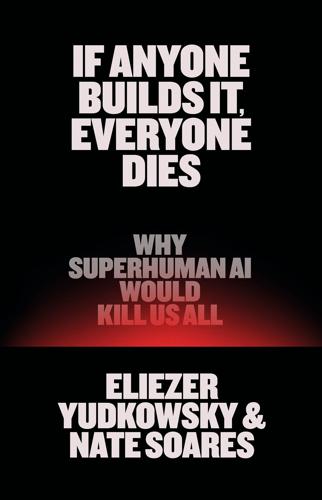
If Anyone Builds It, Everyone Dies: Why Superhuman AI Would Kill Us All
by
Eliezer Yudkowsky
and
Nate Soares
Published 15 Sep 2025
But that’s not the same as understanding what the numbers mean, or why they work. And engineers aren’t about to start understanding, not anytime soon. In the mid-1950s, humanity embarked on a great project to understand intelligence well enough to craft it inside of a machine. That research progress stalled out in a series of “AI winters,” where money invested into AI research never paid off and funding repeatedly collapsed. Humanity never learned to understand intelligence; we never learned to build minds by hand. The way humanity finally got to the level of ChatGPT was not by finally comprehending intelligence well enough to craft an intelligent mind.

Power and Progress: Our Thousand-Year Struggle Over Technology and Prosperity
by
Daron Acemoglu
and
Simon Johnson
Published 15 May 2023
As the spectacular promises made by AI researchers were all unmet, funding for the field dried up, and what came to be called the first “AI winter” set in. There was renewed enthusiasm in the early 1980s based on advances in computing technology and some limited success of expert systems, which promised to provide expert-like advice and recommendations. A few successful applications were developed in the context of identifying infectious diseases and some unknown molecules. Soon, claims about artificial intelligence reaching human-level expertise were circulating again, and funding resumed. By the end of the 1980s, a second AI winter was upon the field because the promises were again unfulfilled.

The Economic Singularity: Artificial Intelligence and the Death of Capitalism
by
Calum Chace
Published 17 Jul 2016
Herbert Simon said in 1965 that “machines will be capable, within twenty years, of doing any work a man can do,”[lxii] and two years later Marvin Minksy said that “Within a generation ... the problem of creating 'artificial intelligence' will substantially be solved.”[lxiii] These early claims turned out to be ill-founded, and later generations of researchers found their sources of funding dried up in so-called AI winters. Some leading figures in the field today are worried that a similar fate may befall them because, they say, excessive claims are being made about the capabilities of AI systems today, and what can be achieved in the short term. This seems to me an ungrounded fear. Machine intelligence is the target of enormous investments – by technology giants like Google and Facebook, by startups, by traditional companies like the automotive manufacturers, and by governments.
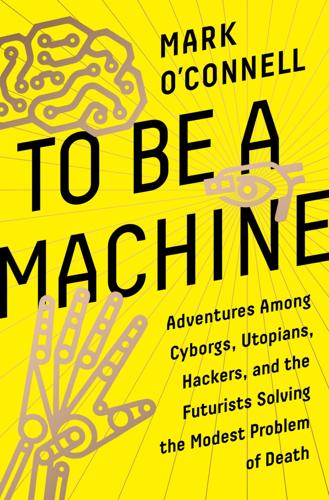
To Be a Machine: Adventures Among Cyborgs, Utopians, Hackers, and the Futurists Solving the Modest Problem of Death
by
Mark O'Connell
Published 28 Feb 2017
An attempt will be made to find how to make machines that use language, form abstractions and concepts, solve kinds of problems now reserved for humans, and improve themselves. We think that a significant advance can be made in one or more of these problems if a carefully selected group of scientists work on it together for a summer. This sort of hubris has been an intermittent characteristic of AI research, and has led to a series of “AI winters”—periods of drastically decreased funding following bursts of intense enthusiasm about the imminent solution to some or other problem which then turned out to be much more complicated than imagined. Repeated patterns, through the decades, of overpromising and underdelivering had led to a culture within AI whereby researchers were reluctant to look too far ahead.

Successful Lisp - About
by
Unknown
But in 1984, the year Big Brother never really became a reality (did it?), the year that the first bleeding-edge (but pathetic by today's standards) Macintosh started volume shipments, the Lisp world started changing. Unfortunately, most programmers never noticed; Lisp's fortune was tied to AI, which was undergoing a precipitous decline -- The AI Winter -- just as Lisp was coming of age. Some say this was bad luck for Lisp. I look at the resurgence of interest in other dynamic languages and the problems wrestled with by practicioners and vendors alike, and wonder whether Lisp wasn't too far ahead of its time. I changed my opinion of Lisp over the years, to the point where it's not only my favorite progamming language, but also a way of structuring much of my thinking about programming.
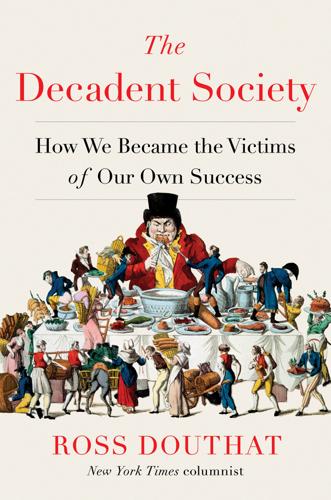
The Decadent Society: How We Became the Victims of Our Own Success
by
Ross Douthat
Published 25 Feb 2020
Meanwhile, travel speeds have dropped and transportation innovations have been delayed and delayed, and while we may get driverless cars in some form eventually (albeit perhaps a form that can’t drive in the rain or snow), the harder limits on machine intelligence have not yet been overcome. Indeed, beneath the hype and scaremongering about artificial intelligence, there is just as much evidence that we’re actually headed for an “AI winter”—in which research funding and public interest both dry up—as there is that we’ll all be in thrall to a superintelligence soon enough. Robots have obviously taken some jobs, with particularly disruptive consequences in some industries, and no doubt they will take more. But a society being fundamentally transformed by automation would have sharp productivity growth, of the kind we used to have and briefly enjoyed in the Internet’s first flower, rather than the productivity stagnation afflicting both the United States and Europe.

New Dark Age: Technology and the End of the Future
by
James Bridle
Published 18 Jun 2018
This idea was attacked by numerous researchers over the next decade, who held that intelligence was the product of the manipulation of symbols: essentially, some knowledge of the world was required to reason meaningfully about it. This debate between connectionists and symbolists was to define the artificial intelligence field for the next forty years, leading to numerous fallings out, and the notorious ‘AI winters’ in which no progress was made at all for many years. At heart, it was not merely a debate about what it means to be intelligent, but what is intelligible about intelligence. One of the more surprising advocates of early connectionism was Friedrich Hayek, best known today as the father of neoliberalism.

Artificial Unintelligence: How Computers Misunderstand the World
by
Meredith Broussard
Published 19 Apr 2018
I’m going to explain machine learning a few different ways and also demonstrate some code. It’s going to get technical. If the technical parts get confusing, don’t worry; you can skim them first and return to them later. AI enjoyed a popularity bump in 2017 in contrast to many years of what people call an AI winter. In the mainstream, people mostly ignored AI for the first decade of the 2000s. The Internet was the popular thing technologically, then mobile devices, and those were the focus of our collective imagination. In the middle of the 2010s, however, people started talking about machine learning. Suddenly, AI was on fire again.

The Thinking Machine: Jensen Huang, Nvidia, and the World's Most Coveted Microchip
by
Stephen Witt
Published 8 Apr 2025
These giant contraptions absorbed lots of power and money while producing little of use until, in 1969, the influential MIT researcher Marvin Minsky demonstrated that a single layer of neurons was unable to perform even one of the simplest logic operations. Funding evaporated, and most of the machines were dismantled. AI suffered many false starts in the years that followed and developed a reputation as a career graveyard. Early progress with “symbolic” AI sputtered out in the first AI winter, in 1974. In the 1980s, revived interest in “expert systems” AI created a brief stock market bubble that popped following the 1987 crash. The governments of Japan, the United Kingdom, and the United States all launched ambitious AI initiatives, spending billions in taxpayer funds on grand strategies for research.
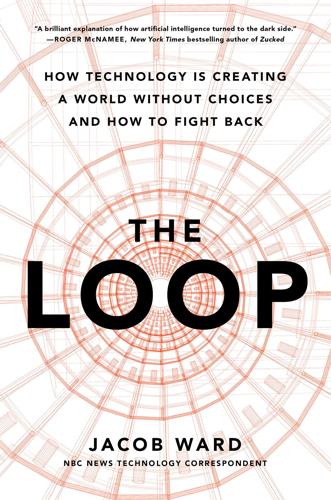
The Loop: How Technology Is Creating a World Without Choices and How to Fight Back
by
Jacob Ward
Published 25 Jan 2022
Minsky, Newell, and Simon were all prone to grandiose predictions in which robots would be picking up socks off the floor within a couple of decades. When that didn’t bear out, the disappointment poisoned the reputation of AI. For nearly ten years beginning in 1974, the whole field’s funding essentially dried up, the first so-called AI winter. And during the decades-long hunt for better systems, the field lost its way more than once. Minsky, for instance, published a whole book criticizing the idea of neural networks—interconnected systems of thinking “neurons” that might coordinate to attack a complex problem—and the field largely abandoned the concept for a decade.

Possible Minds: Twenty-Five Ways of Looking at AI
by
John Brockman
Published 19 Feb 2019
Since I had an MBA from Columbia Business School and a series of relative successes in business, I was dragooned into becoming an agent, initially for Gregory Bateson and John Lilly, whose books I sold quickly, and for sums that caught my attention, thus kick-starting my career as a literary agent. I never did meet Richard Feynman. THE LONG AI WINTERS This new career put me in close touch with most of the AI pioneers, and over the decades I rode with them on waves of enthusiasm, and into valleys of disappointment. In the early eighties the Japanese government mounted a national effort to advance AI. They called it the Fifth Generation; their goal was to change the architecture of computation by breaking “the von Neumann bottleneck” by creating a massively parallel computer.
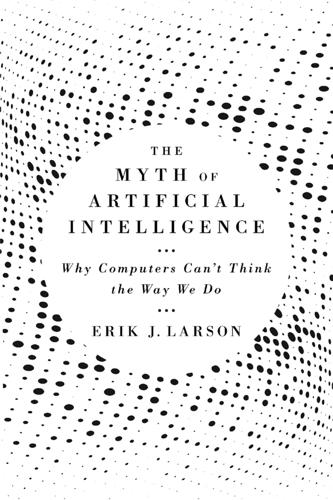
The Myth of Artificial Intelligence: Why Computers Can't Think the Way We Do
by
Erik J. Larson
Published 5 Apr 2021
As proof of this claim, consider how little investment is given to exploring paths to artificial general intelligence, as opposed to applications of, for instance, deep learning to gameplay. The latter is clearly a dead-end to artificial general intelligence, as even deep learning researchers are now beginning to admit—wary as they no doubt are of another notorious AI winter on the heels of a new bubble. The culture is squeezing profits out of low-hanging fruit, while continuing to spin AI mythology, a strategy guaranteed to lead to disillusionment without an inflow of radical conceptual innovation. Wiener wryly observed that Swift’s farcical Laputa world, where a machine evolves science “automatically,” had a certain intellectual footing in 1950s megabuck science, with the inevitable result of further pushing away a culture of invention.

The Rationalist's Guide to the Galaxy: Superintelligent AI and the Geeks Who Are Trying to Save Humanity's Future
by
Tom Chivers
Published 12 Jun 2019
The trouble was that artificial intelligence had to be intelligent, not merely powerful. So suddenly it didn’t look like we were about to build a super-smart robot in the next few years, and AI dropped out of fashion. Funds were cut, the press got sniffy, and serious research took a back seat. This ‘AI winter’ came to an end in the early 1980s, with some breakthroughs by Japanese companies. Then there was another one, beginning around 1987, after another period of unsustainable excitement and inevitable disappointment; again, funding dried up. That winter thawed in the 1990s, as researchers started to focus on things like neural nets – systems that could learn from experience, and which didn’t immediately break and start churning out nonsense if there was a slight mistake in the input.
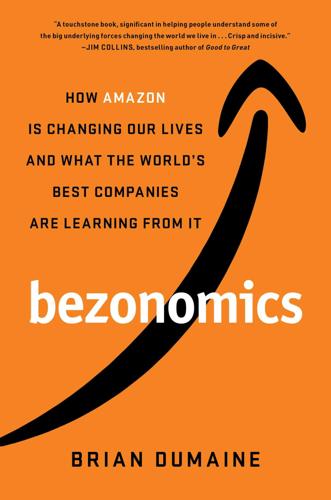
Bezonomics: How Amazon Is Changing Our Lives and What the World's Best Companies Are Learning From It
by
Brian Dumaine
Published 11 May 2020
A product called Dragon could process simple speech without the speaker having to pause awkwardly between each word. Despite this progress, over the next two decades, voice recognition as well as other types of AI programming largely disappointed its supporters, periodically entering into what the academic community dubbed AI winters—periods when progress and funding would dry up. The root cause wasn’t that scientists didn’t know how to write clever programs. It was that these AI programs required tremendous amounts of rare and expensive computing power. The fortunes of this technology changed as Moore’s law—which posits that computer processing power and speed doubles every two years—made crunching the mountains of data necessary for voice AI more affordable.

MegaThreats: Ten Dangerous Trends That Imperil Our Future, and How to Survive Them
by
Nouriel Roubini
Published 17 Oct 2022
The possibility is very real that a tiny top echelon will win while everybody else loses their jobs, their incomes, and their dignity. Mary Shelley’s Frankenstein pales next to this lurking megathreat. Until very recently the burden of proof stymied believers in the transformative power of artificial intelligence, or AI. A so-called AI winter prevailed during the 1980s and 1990s, as progress was painfully slow and seemed to support skeptics who maintained that computers could never match, much less exceed, the je ne sais quoi of human intellectual prowess. Machines improved at doing repetitive things, but deep thinking appeared to remain an exclusively human dimension.

The Deep Learning Revolution (The MIT Press)
by
Terrence J. Sejnowski
Published 27 Sep 2018
Rather than write a program based on logic and heuristics to handle all possible board positions, an impossible task given that there are 1020 possible backgammon board positions, we had the network learn to play through pattern recognition by watching a teacher play.10 Gerry went on to create the first backgammon program that played at world-championship levels by having the backgammon network play itself (a story that will be told in chapter 10). After my lecture, I learned that there was a front page article in the New York Times that morning about how government agencies were slashing The Rebirth of Artificial Intelligence 35 funding for artificial intelligence. Although this was the beginning of an AI winter for mainstream researchers, it didn’t affect me or the rest of my group, for whom the neural network spring had just begun. But our new approach to AI would take twenty-five years to deliver realworld applications in vision, speech, and language. Even in 1989, I should have known it would take this long.
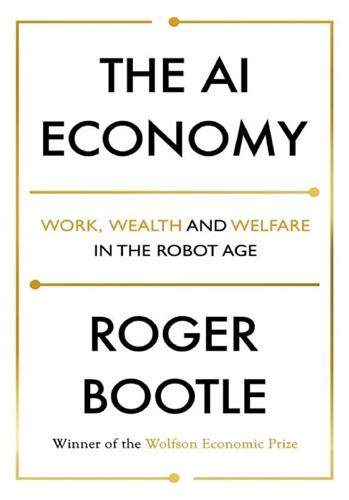
The AI Economy: Work, Wealth and Welfare in the Robot Age
by
Roger Bootle
Published 4 Sep 2019
(Mind you, their other achievements belie this comparison.) Indeed, the history of AI research is one of alternate periods of feast and famine as the experience of success in some field leads to a flood of investment, followed by failure, leading to funding being cut, or even drying up altogether. Periods of the latter are referred to as “AI winters.” In fact, machines that matched humans in general intelligence have been anticipated since the invention of computers in the 1940s. At that time, and at all times subsequently, this development was thought likely to occur about 20 years into the future. But the expected arrival date has been receding at the rate of about one year per year.

Human Frontiers: The Future of Big Ideas in an Age of Small Thinking
by
Michael Bhaskar
Published 2 Nov 2021
Business and government piled investment into R&D. Rapid improvements in areas like image recognition, natural language processing, translation, game playing and autonomous driving transformed services and generated hyperbolic headlines. The history of AI is one of crests of hype followed by troughs – the so-called AI winter set in from the 1980s with the broad failure of ‘symbolic’ approaches. But by the 2010s a new spring had arrived, and DeepMind was in the vanguard. Public conversation around AI has been dominated by the risks and rewards of job automation. And yes, this is a significant question. Nonetheless, I have yet to meet an AI scientist motivated by the prospect of automating a call centre.

The Coming Wave: Technology, Power, and the Twenty-First Century's Greatest Dilemma
by
Mustafa Suleyman
Published 4 Sep 2023
In other words, with just a day’s training, AlphaZero was capable of learning more about the game than the entirety of human experience could teach it. AlphaGo’s triumph heralded a new age of AI. This time, unlike with DQN, the proceedings had been broadcast live to millions. Our team had, in full view of the public, emerged from what researchers had called “the AI winter,” when research funding dried up and the field was shunned. AI was back, and finally starting to deliver. Sweeping technological change was, once again, on its way, a new wave starting to appear. And this was only the beginning. FROM ATOMS, TO BITS, TO GENES Until recently, the history of technology could be encapsulated in a single phrase: humanity’s quest to manipulate atoms.

Artificial Intelligence: A Modern Approach
by
Stuart Russell
and
Peter Norvig
Published 14 Jul 2019
However, none of these projects ever met its ambitious goals in terms of new AI capabilities or economic impact. Overall, the AI industry boomed from a few million dollars in 1980 to billions of dollars in 1988, including hundreds of companies building expert systems, vision systems, robots, and software and hardware specialized for these purposes. Soon after that came a period called the “AI winter,” in which many companies fell by the wayside as they failed to deliver on extravagant promises. It turned out to be difficult to build and maintain expert systems for complex domains, in part because the reasoning methods used by the systems broke down in the face of uncertainty and in part because the systems could not learn from experience. 1.3.5The return of neural networks (1986–present) In the mid-1980s at least four different groups reinvented the back-propagation learning algorithm first developed in the early 1960s.
…
These remarkable successes have led to a resurgence of interest in AI among students, companies, investors, governments, the media, and the general public. It seems that every week there is news of a new AI application approaching or exceeding human performance, often accompanied by speculation of either accelerated success or a new AI winter. Deep learning relies heavily on powerful hardware. Whereas a standard computer CPU can do 109 or 1010 operations per second. a deep learning algorithm running on specialized hardware (e.g., GPU, TPU, or FPGA) might consume between 1014 and 1017 operations per second, mostly in the form of highly parallelized matrix and vector operations.
…
Artificial Intelligence: The Very Idea. MIT Press. Havelund, K., Lowry, M., Park, S., Pecheur, C., Penix, J., Visser, W., and White, J. L. (2000). Formal analysis of the remote agent before and after flight. In Proc. 5th NASA Langley Formal Methods Workshop. Havenstein, H. (2005). Spring comes to AI winter. Computer World, Fe. 14. Hawkins, J. (1961). Self–organizing systems: A review and commentary. Proc. IRE, 49, 31–48. Hay, N., Russell, S. J., Shimony, S. E., and Tolpin, D. (2012). Selecting computations: Theory and applications. In UAI-12. Hayes, P. J. (1978). The naive physics manifesto. In Michie, D.
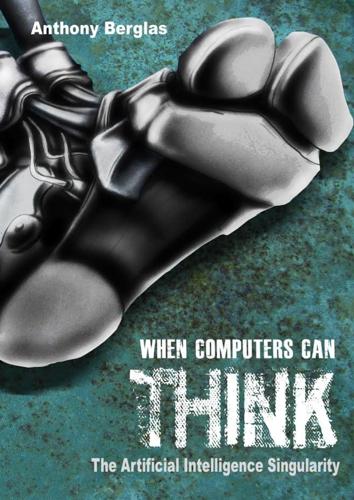
When Computers Can Think: The Artificial Intelligence Singularity
by
Anthony Berglas
,
William Black
,
Samantha Thalind
,
Max Scratchmann
and
Michelle Estes
Published 28 Feb 2015
Researchers began to actively avoided the term artificial intelligence and focus instead on solving more practical problems. True AI is only actually useful if it can solve real problems. SHRDLU may have been interesting, but at the end of the day it was quite useless. The resulting period is referred to as the “AI Winter”. One of Lilienthal’s controlled flights, 1890’s Public expired Historically, the same problem was encountered by early aviation pioneers. In 1891 Otto Lilienthal started to successfully fly his hang gliders. He made thousands of flights and could stay aloft in the wind for extended periods of time, often moving around to find the best positions to be photographed from.

What to Think About Machines That Think: Today's Leading Thinkers on the Age of Machine Intelligence
by
John Brockman
Published 5 Oct 2015
Not only have a number of longstanding challenges finally been met but there’s a growing sense among the community that the best is yet to come. We see this in our interactions with a wide range of researchers, and it can also be seen from the way in which media articles about artificial intelligence have changed in tone. If you hadn’t already noticed, the AI Winter is over and the AI Spring has begun. As with many trends, some people are a little too optimistic about the rate of progress, going as far as predicting that a solution to human-level artificial intelligence might be just around the corner. It’s not. Furthermore, given the negative portrayals of futuristic artificial intelligence in Hollywood, it’s perhaps not surprising that doomsday images still appear with some frequency in the media.
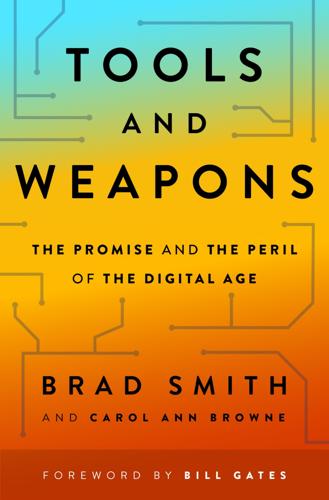
Tools and Weapons: The Promise and the Peril of the Digital Age
by
Brad Smith
and
Carol Ann Browne
Published 9 Sep 2019
Isaac Asimov, “Runaround,” in I, Robot (New York: Doubleday, 1950). Back to note reference 2. In 1984–87, the focus was on advances in “expert systems” and their application to medicine, engineering, and science. There were even special computers made and built for AI. This was followed by a collapse and an “AI Winter,” as it was called, for several years into the mid-1990s. Back to note reference 3. W. Xiong, J. Droppo, X. Huang, F. Seide, M. Seltzer, A. Stolcke, D. Yu, and G. Zweing, Achieving Human Parity in Conversational Speech Recognition: Microsoft Research Technical Report MSR-TR-2016-71, February 2017, https://arxiv.org/pdf/1610.05256.pdf.

The Long History of the Future: Why Tomorrow's Technology Still Isn't Here
by
Nicole Kobie
Published 3 Jul 2024
After a decade of the so-called golden age of AI, it had moved out of mathematical models in academic papers into the real world, with systems actually being built. But after decades of work, it became clear that promises of human-like thinking remained many more decades off. In the mid-1970s, a damning and influential report laid that out in cold, stark language – and funding vanished. Summer was over, and the first AI winter had arrived. Some researchers kept working towards their preferred systems quietly in the background, but this sparked a shift away from talk of artificial general intelligence to machines that do specific tasks. These ‘expert systems’ of the 1980s could diagnose blood disorders, sort through complex computer specifications for customer orders and even reveal chemical structures.

These Strange New Minds: How AI Learned to Talk and What It Means
by
Christopher Summerfield
Published 11 Mar 2025
Even Sir James Lighthill, in his famously gloomy survey of the landscape of AI research in 1972[*4] singled SHRDLU out as being of exceptional interest – despite the ‘pronounced feeling of disappointment’ about progress in the field more generally (his report led to a wholesale withdrawal of research funding known as the ‘AI Winter’). But, as Winograd himself admitted, although many of SHRDLU’s replies were plausible, there was no way ‘you could actually hand it to somebody, and they could use it to move blocks around’. Despite the lofty ambitions of the project – Winograd called the paper describing the work ‘Understanding Natural Language’ – and the carefully scripted demos, SHRDLU was nowhere close to being able to communicate sensibly with people in an open-ended conversation.
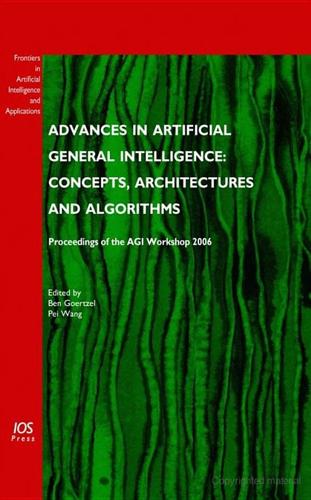
Advances in Artificial General Intelligence: Concepts, Architectures and Algorithms: Proceedings of the Agi Workshop 2006
by
Ben Goertzel
and
Pei Wang
Published 1 Jan 2007
For example, I’m a little surprised at this workshop that there is not a larger contingent of the brain modeling crowd. I hope we will by next year’s conference, or workshop. For example, Henry Markram, the Swiss IBM, the Blue Brain project, that kind of thing. So I hope at the next workshop there will be a bigger contingent of that aspect. Obstacles? Well you just talked about AI Winters and Summers. I don’t know how many cycles it’s been through. Is it three, five? Is there a lesson to be learnt there? I guess one obvious one is just ignorance. Even if you take a purely engineering approach, how the hell do you build an intelligent machine? My sense is we don’t even know what the target is; we don’t even know how difficult it is to do that thing.

Robot Rules: Regulating Artificial Intelligence
by
Jacob Turner
Published 29 Oct 2018
In October 2017, Saudi Arabia granted “citizenship” to a humanoid robot named Sophia.1 This move was derided by commentators as a cynical media stunt and a particularly hypocritical act for a country which grants only limited rights to human women.2 Even so, the episode is significant because it was the first time that a country purported to grant a robot or AI entity any form of legal personality in its own right. Just days after the Saudi announcement, Tokyo’s Shibuya district announced that an AI system had been granted “residency”.3 In a seminal 1992 article, Lawrence B. Solum proposed a form of legal personhood4 for AI.5 When that paper was written, the world was still in the midst of the second “AI Winter”: a period when setbacks in AI development coupled with a lack of funding contributed to a period of relatively slow growth.6 For the following two decades, Solum’s ideas remained a mere thought experiment. Given the recent developments in the capabilities of AI and its growing use, it is now an appropriate time to reconsider this proposal.7 Legal personality for AI is no longer just a matter for academic debate.

The Innovators: How a Group of Inventors, Hackers, Geniuses and Geeks Created the Digital Revolution
by
Walter Isaacson
Published 6 Oct 2014
Gary Marcus, “Hyping Artificial Intelligence, Yet Again,” New Yorker, Jan. 1, 2014, citing “New Navy Device Learns by Doing” (UPI wire story), New York Times, July 8, 1958; “Rival,” New Yorker, Dec. 6, 1958. 3. Marvin Minsky and Seymour Papert, the original gurus of artificial intelligence, challenged some of Rosenblatt’s premises, after which the excitement surrounding the Perceptron faded and the entire field entered a decline known as the “AI winter.” See Danny Wilson, “Tantalizingly Close to a Mechanized Mind: The Perceptrons Controversy and the Pursuit of Artificial Intelligence,” undergraduate thesis, Harvard, December 2012; Frank Rosenblatt, “The Perceptron: A Probabilistic Model for Information Storage and Organization in the Brain,” Psychological Review, Fall 1958; Marvin Minsky and Seymour Papert, Perceptrons (MIT, 1969). 4.

On the Edge: The Art of Risking Everything
by
Nate Silver
Published 12 Aug 2024
But if you were involved in the early days of OpenAI, you are particularly likely to have faith that things would just work out somehow. OpenAI was not the sort of startup that began in a Los Altos garage. It was an expensive and audacious bet—the funders originally pledged to commit $1 billion to it on a completely unproven technology after many “AI winters.” It inherently did seem ridiculous—until the very moment it didn’t. “Large language models seem completely magic right now,” said Stephen Wolfram, a pioneering computer scientist who founded Wolfram Research in 1987. (Wolfram more recently designed a plug-in that works with GPT-4 to essentially translate words into mathematical equations.)